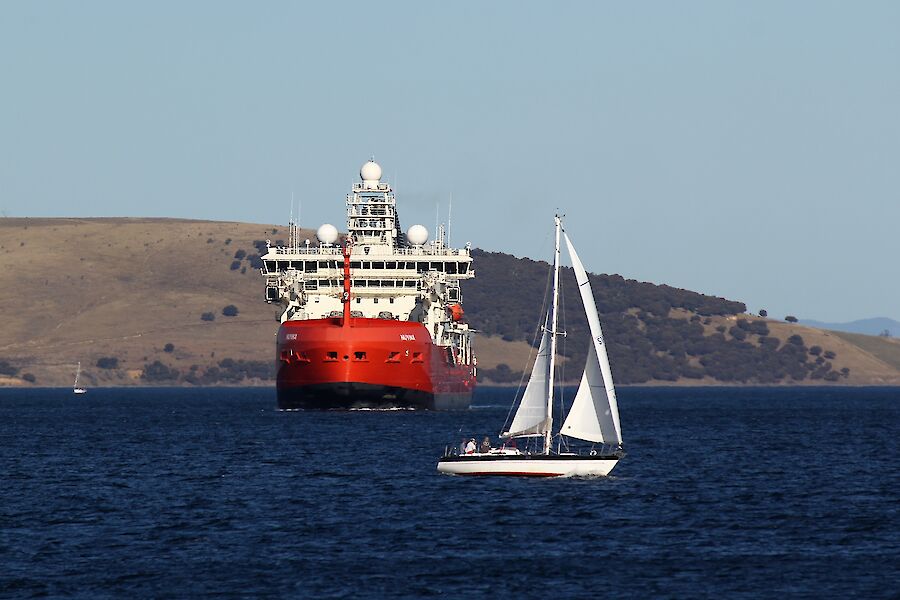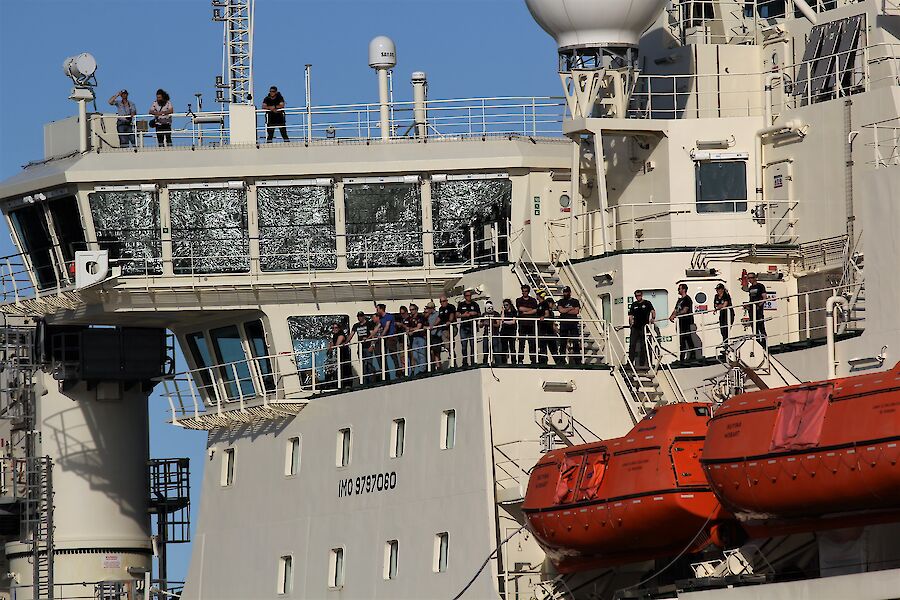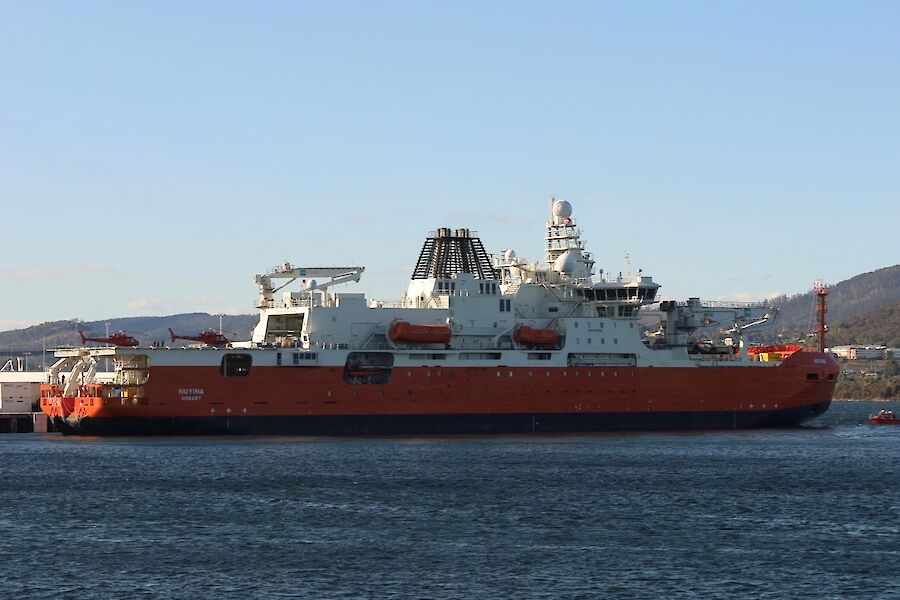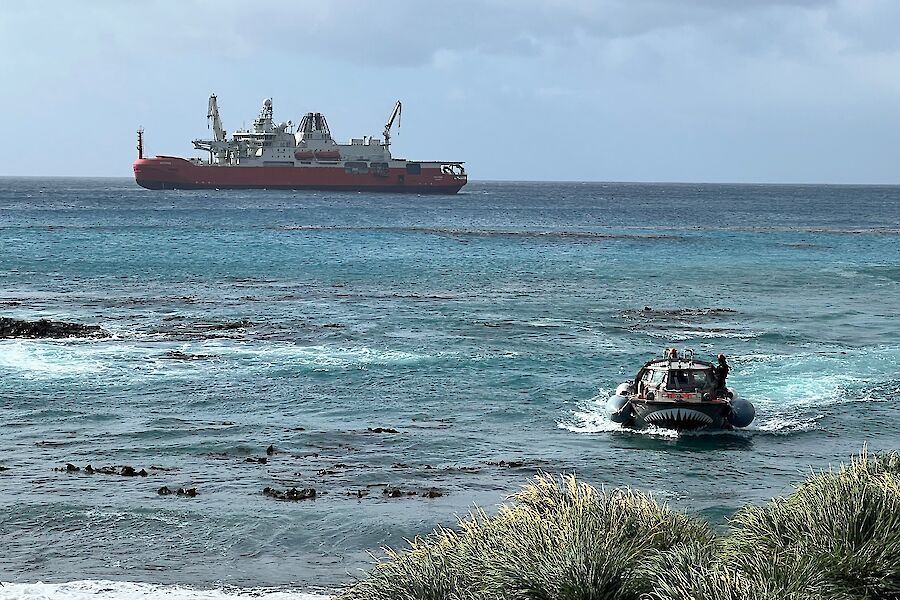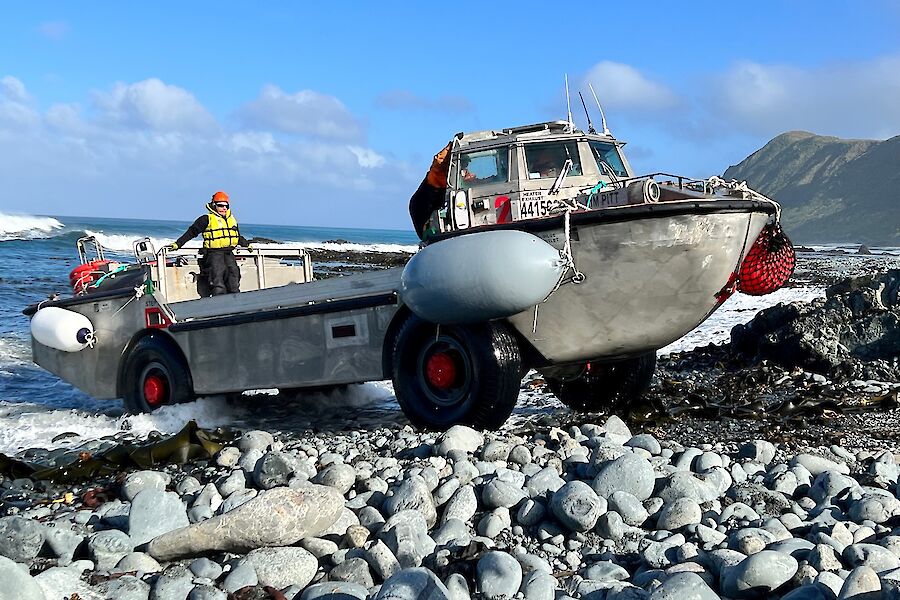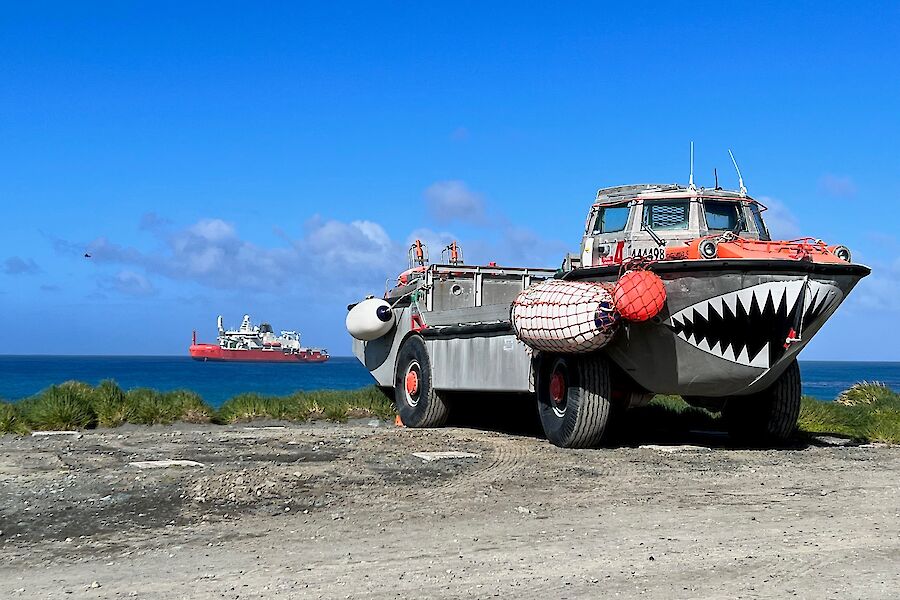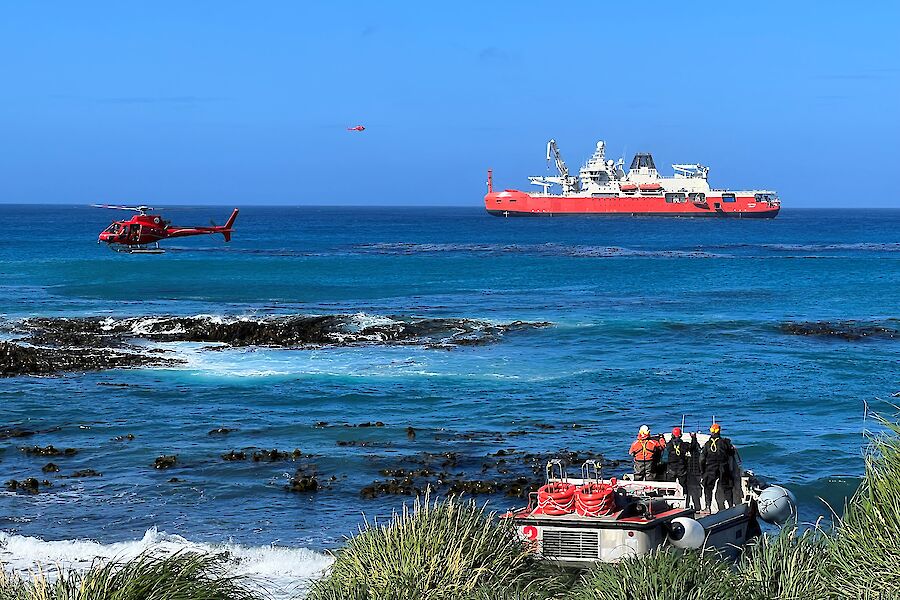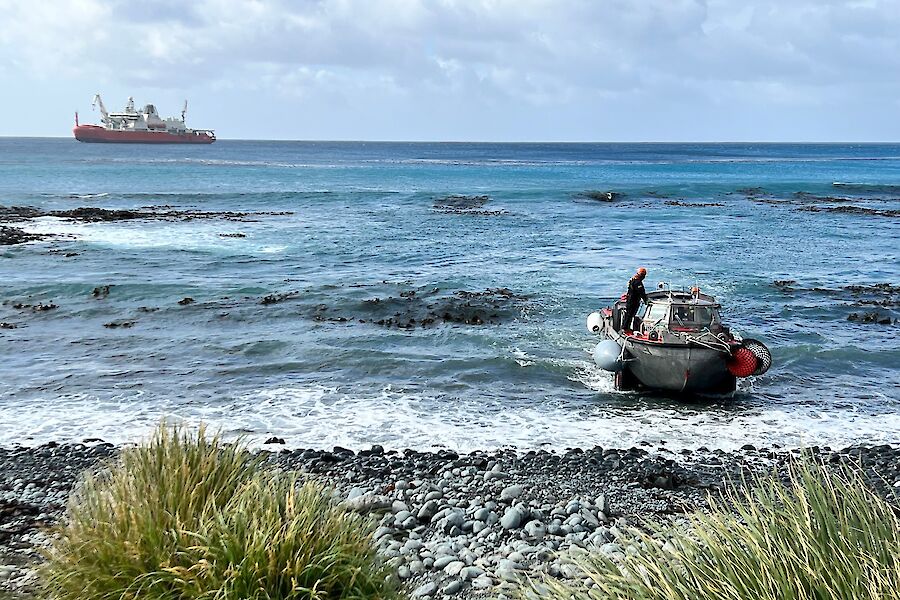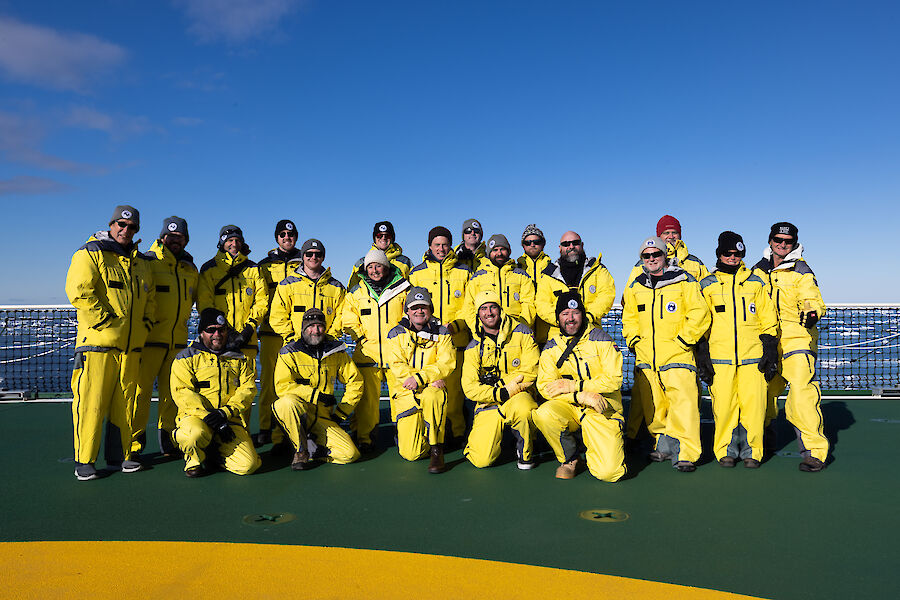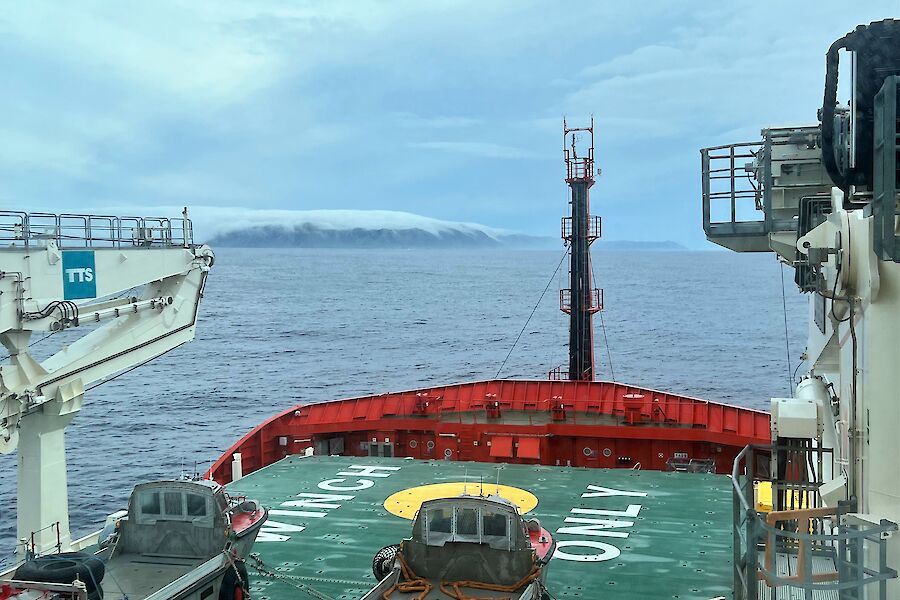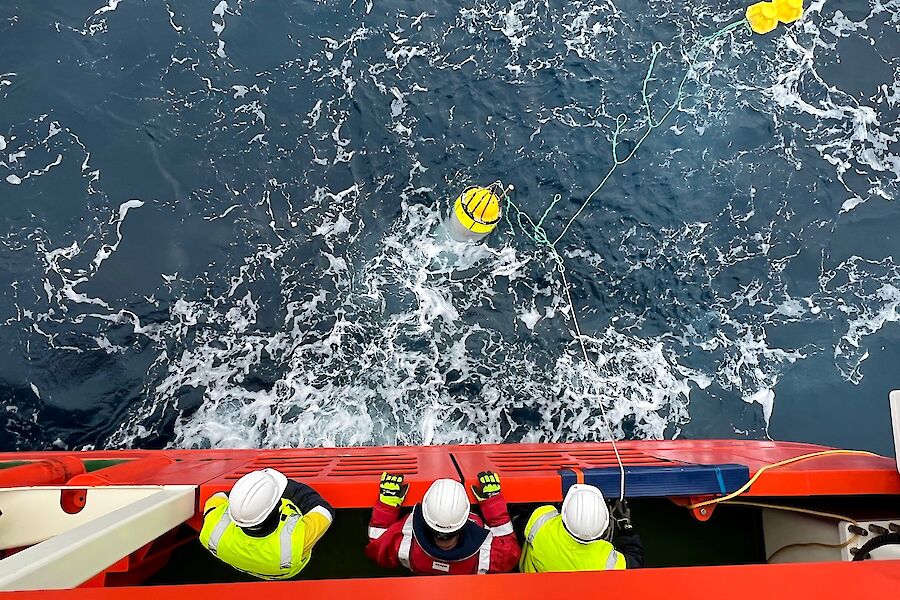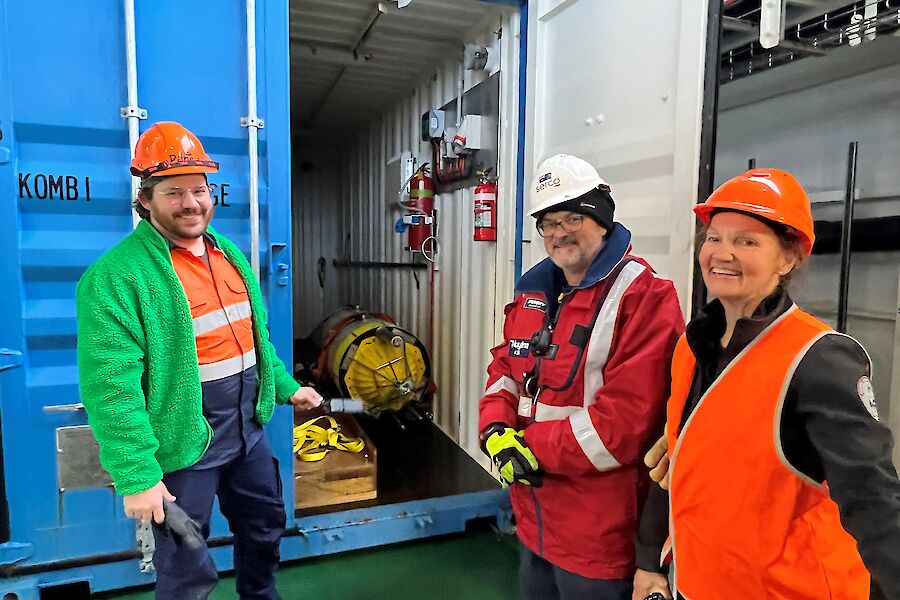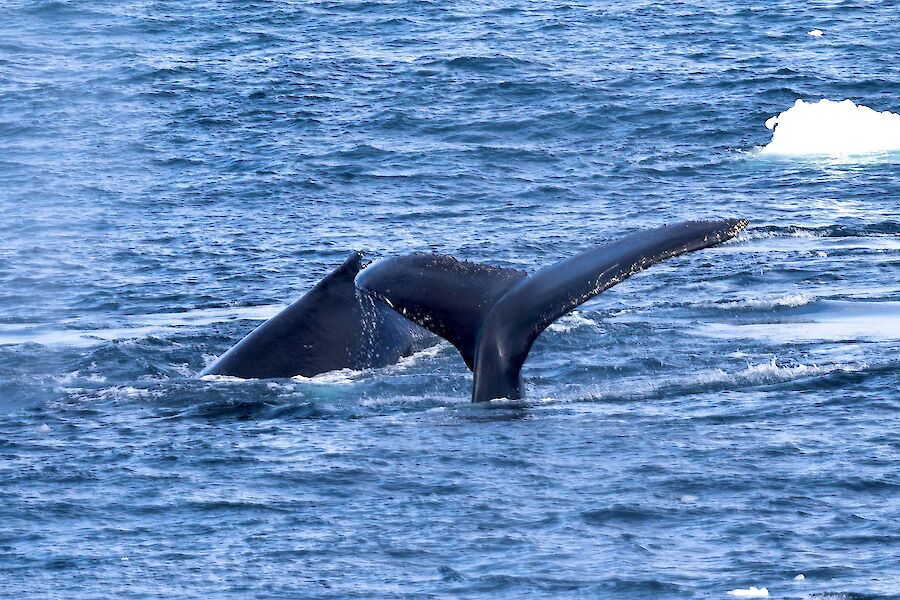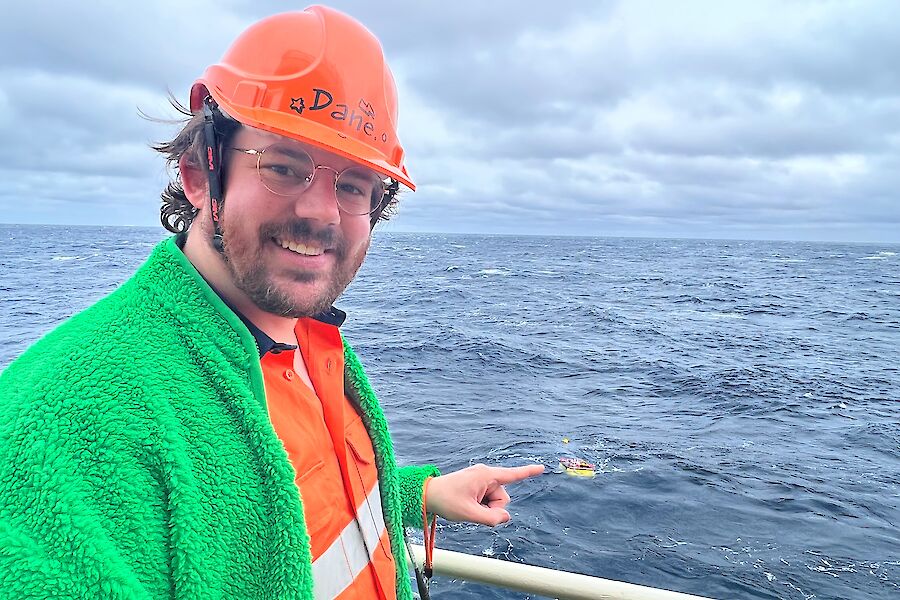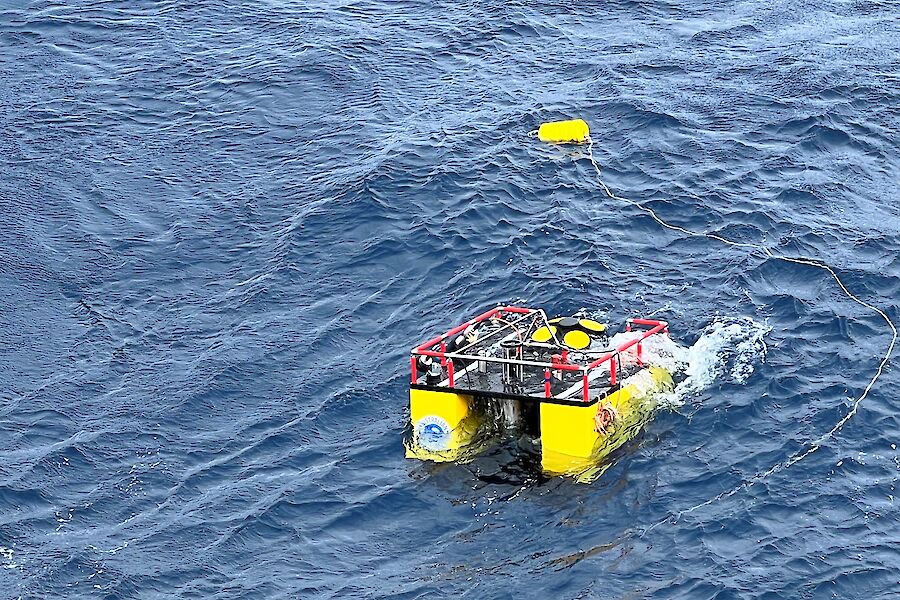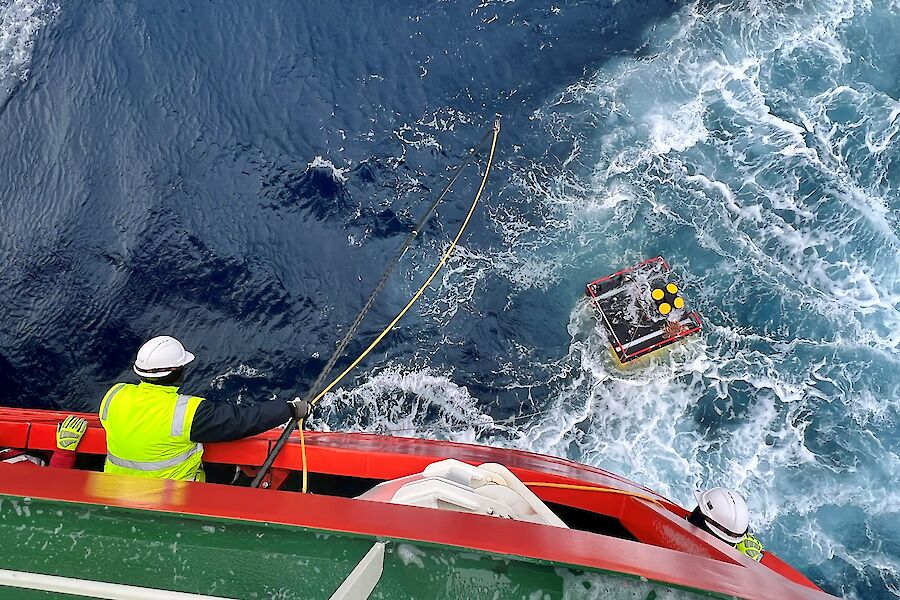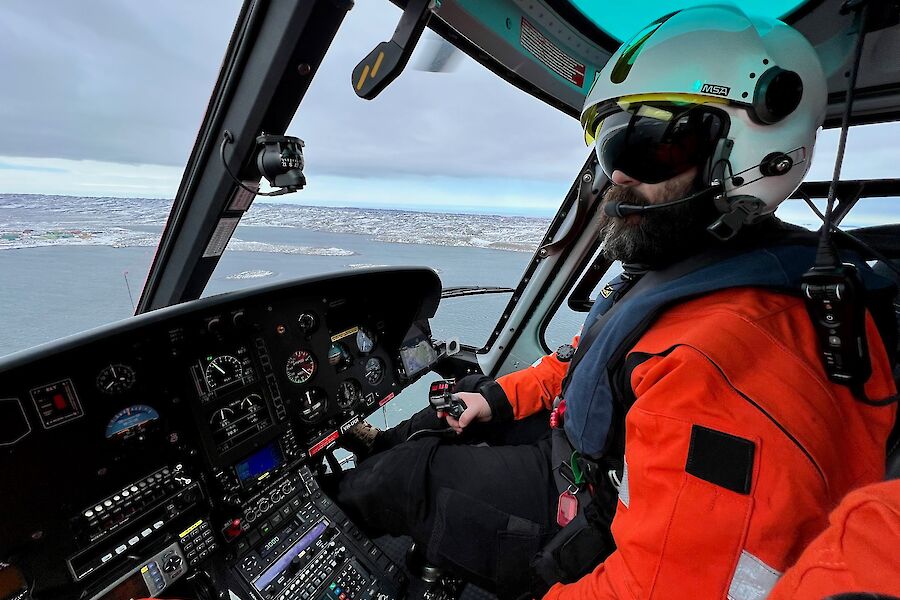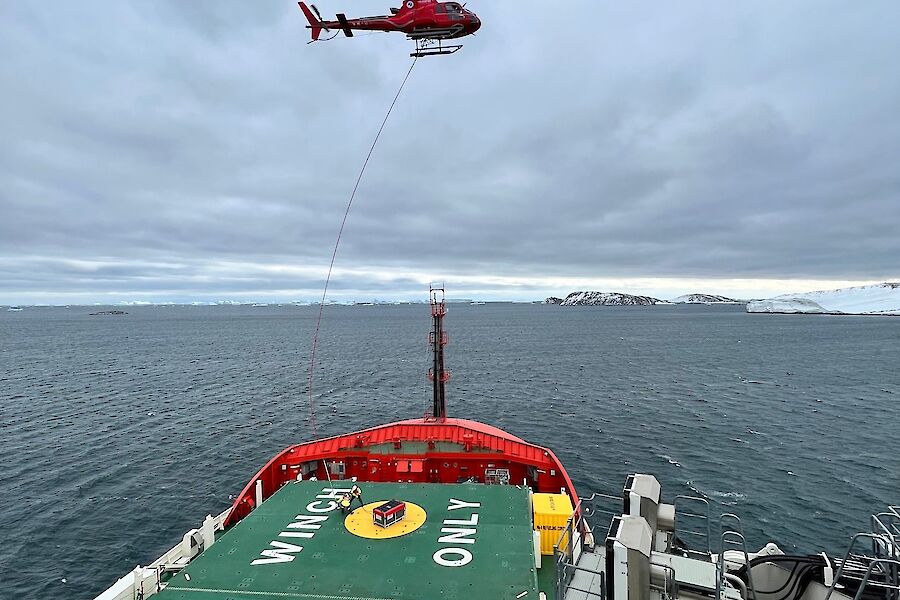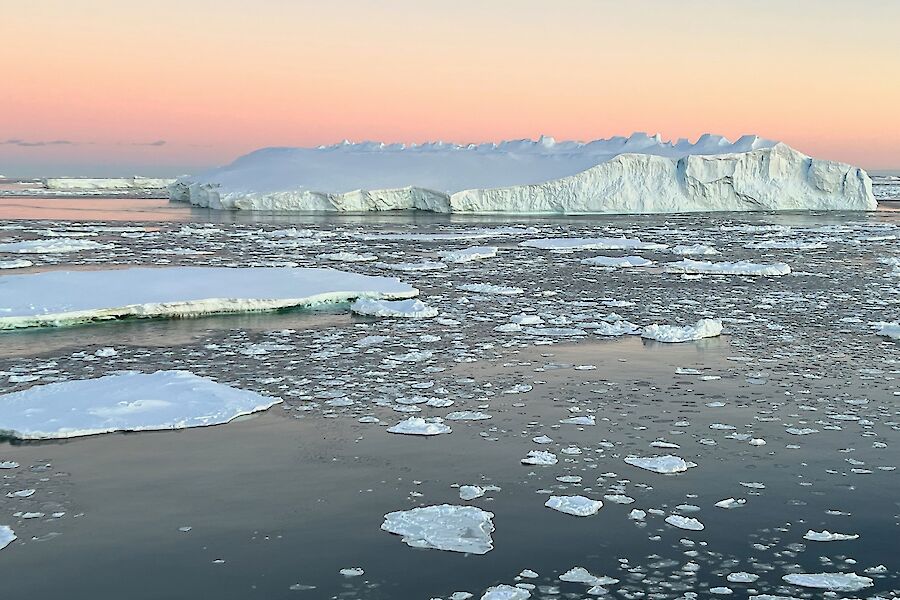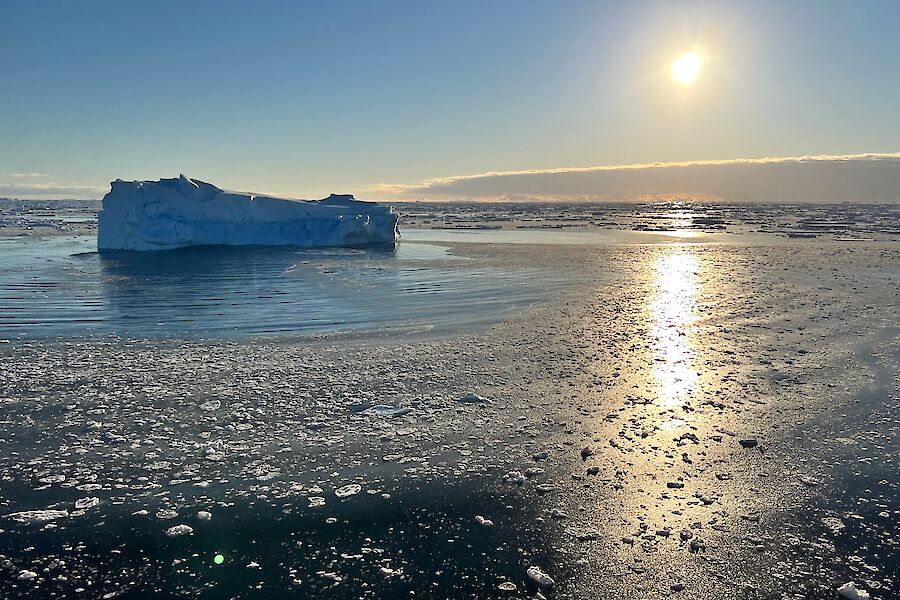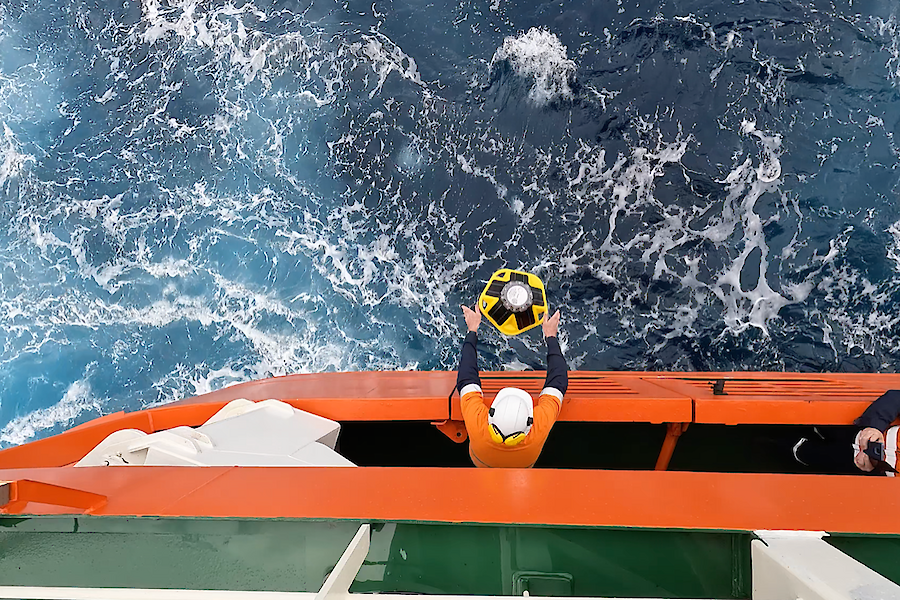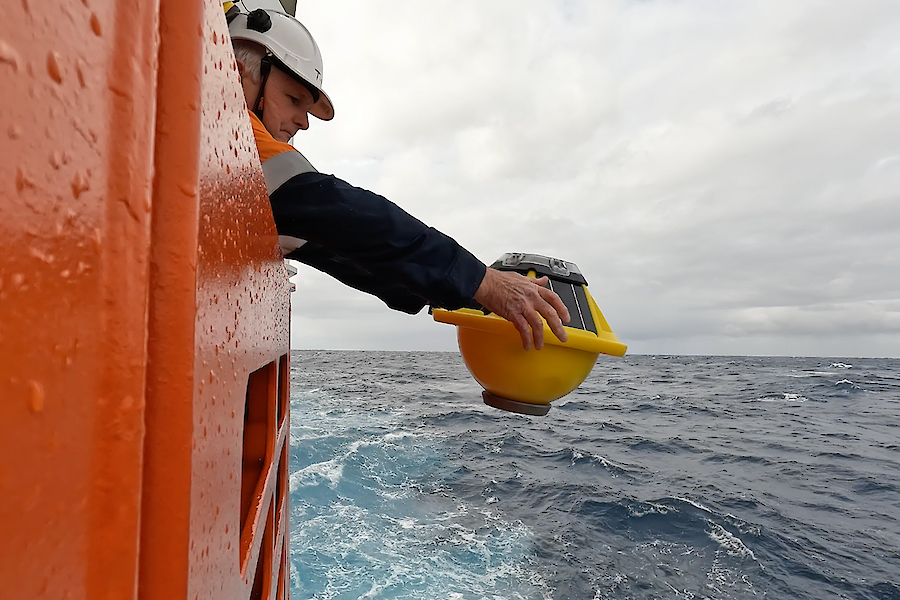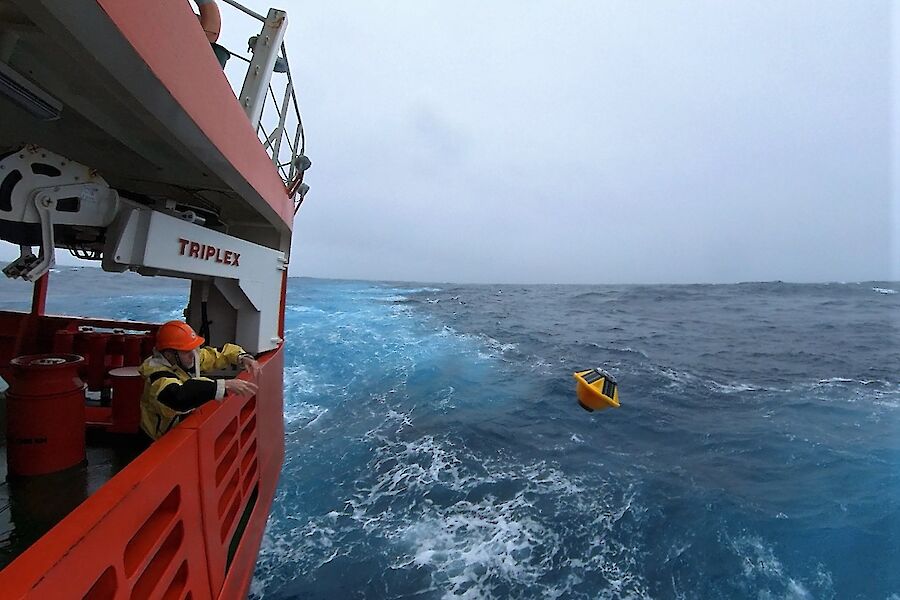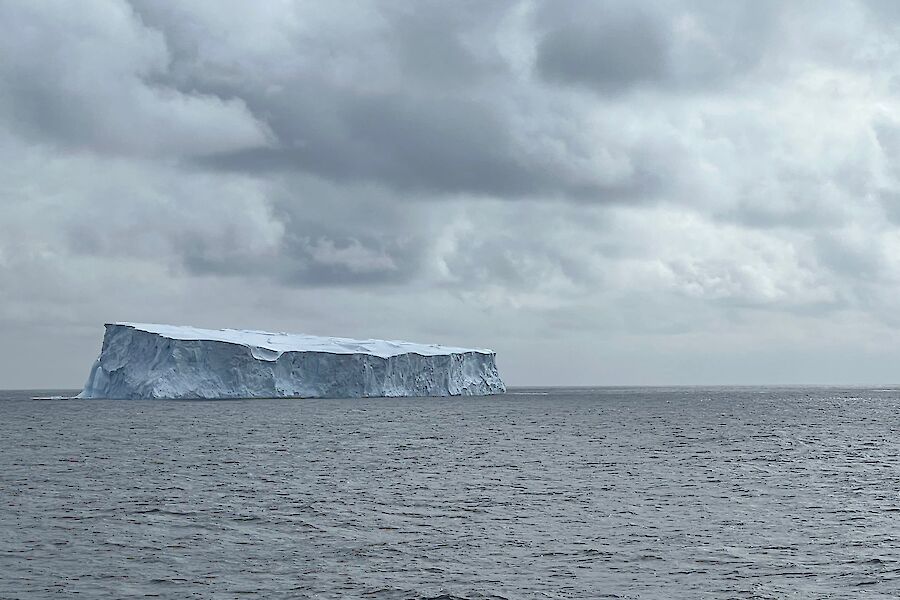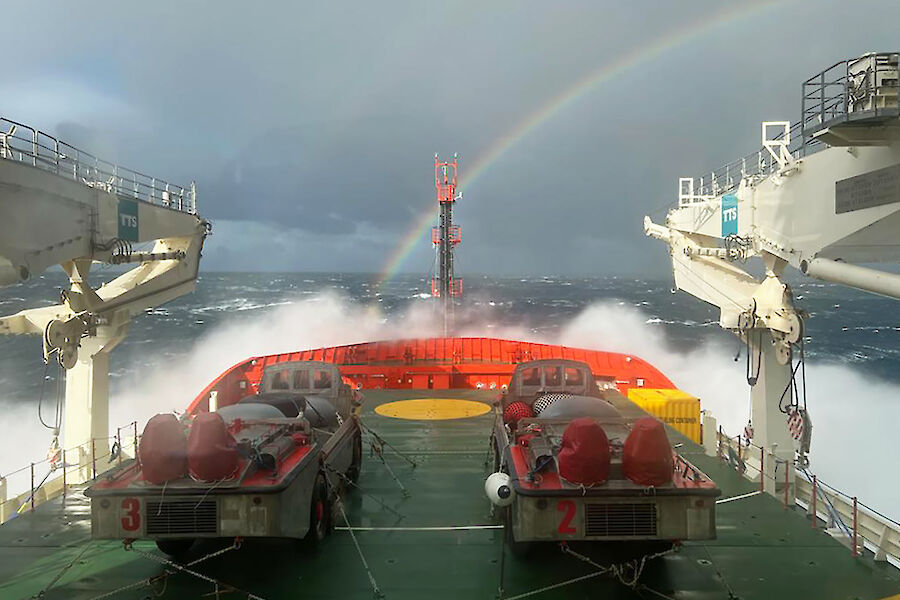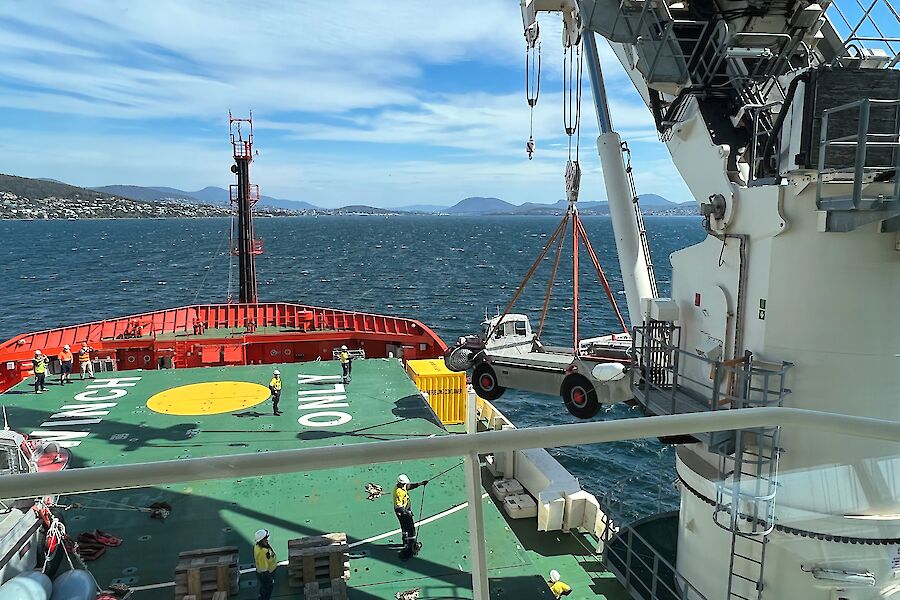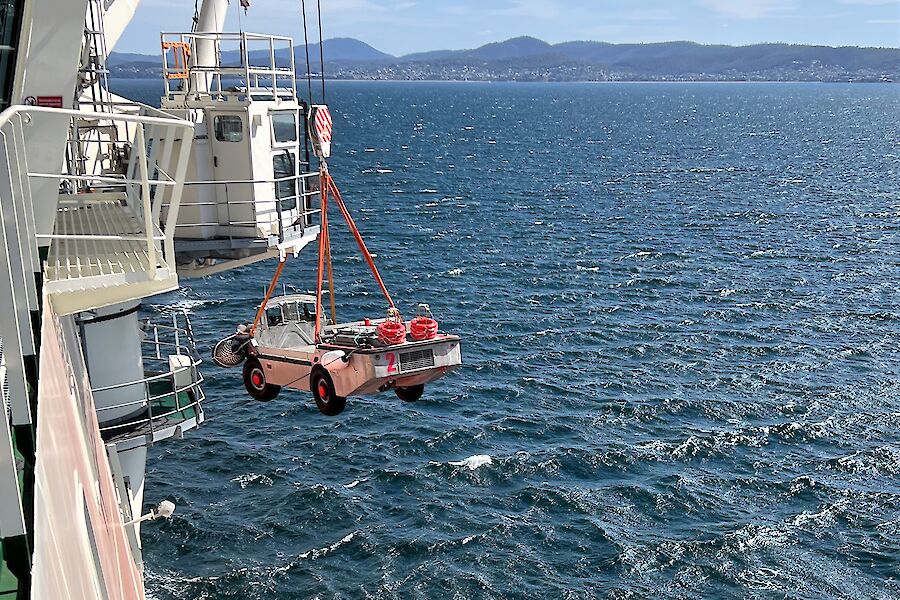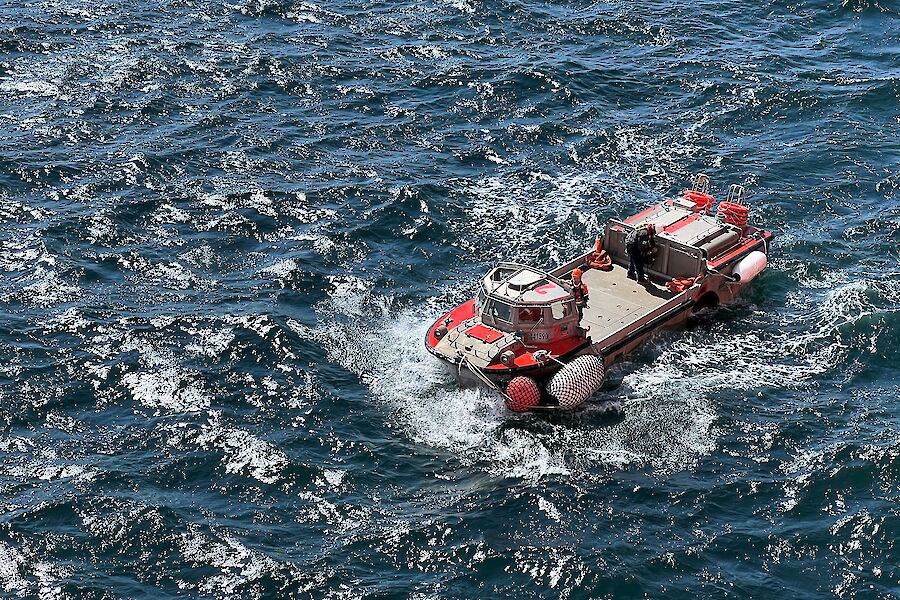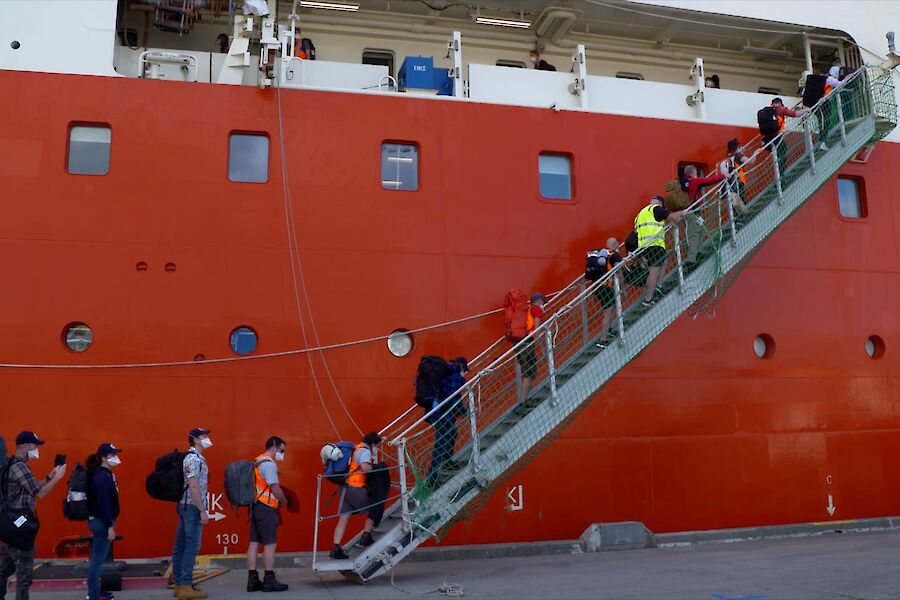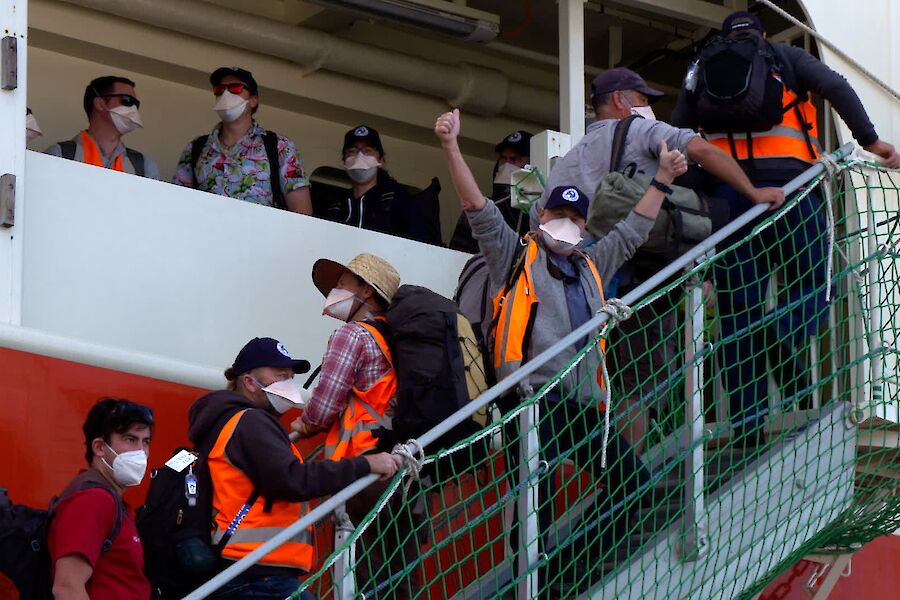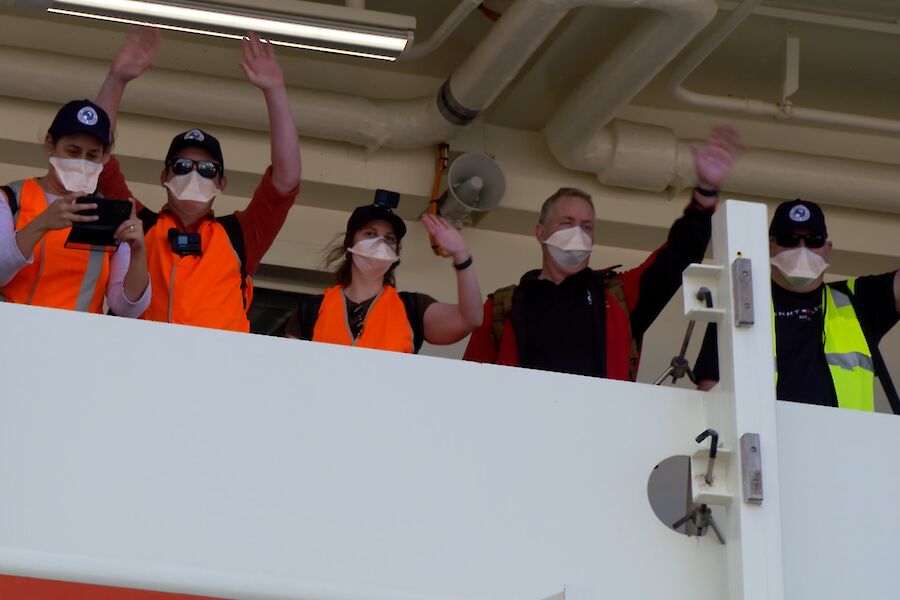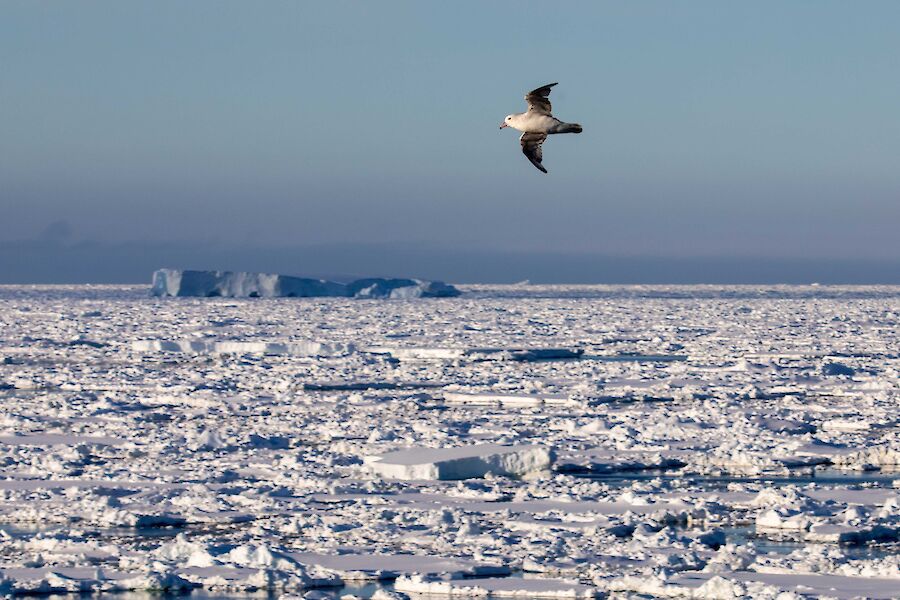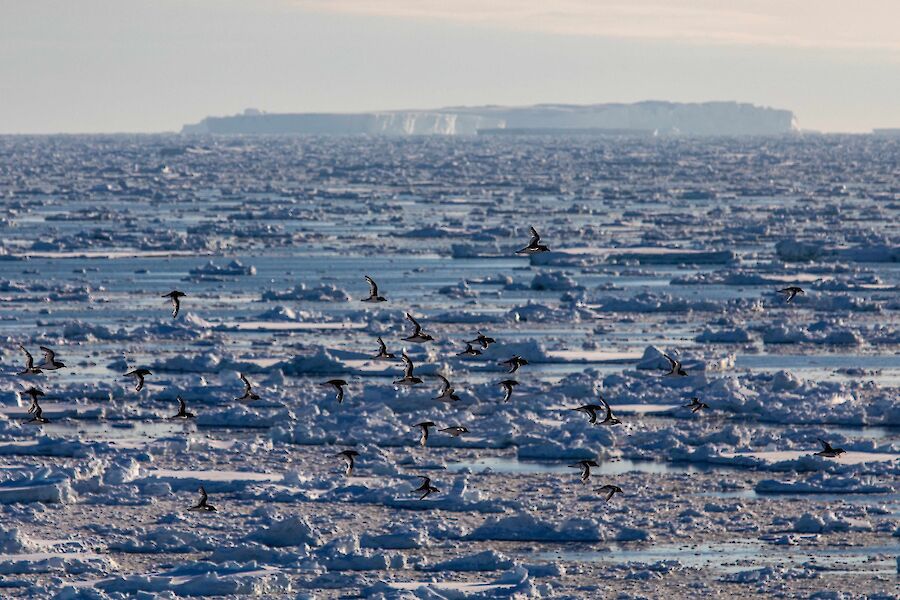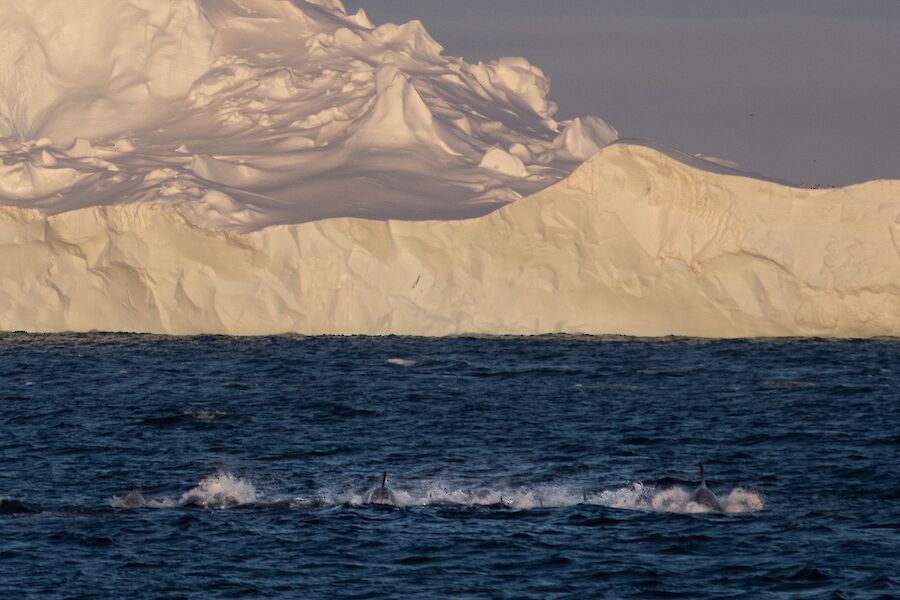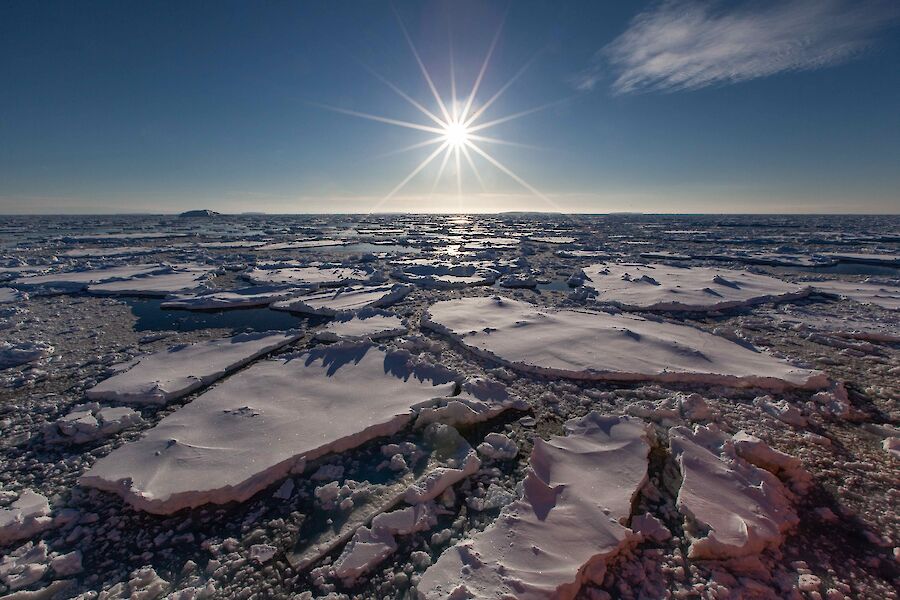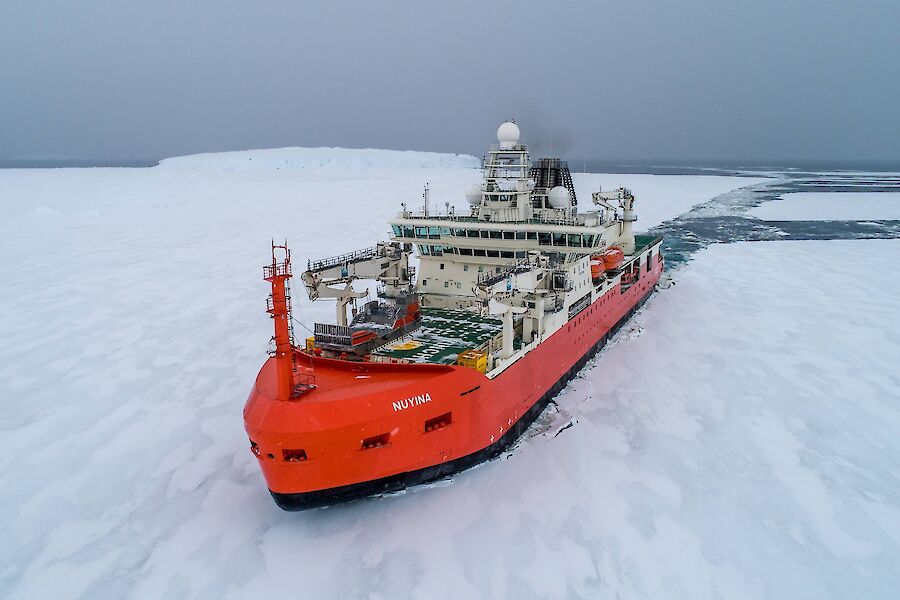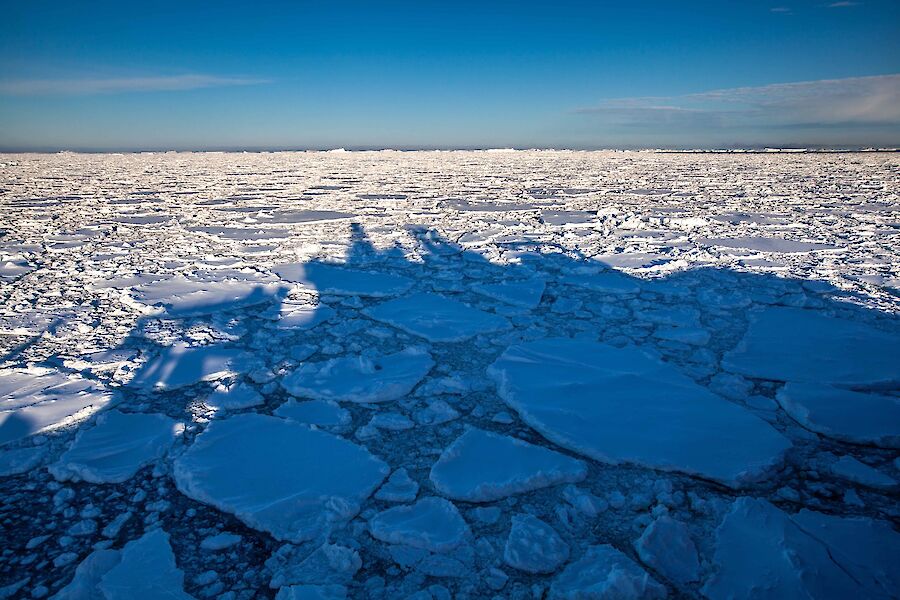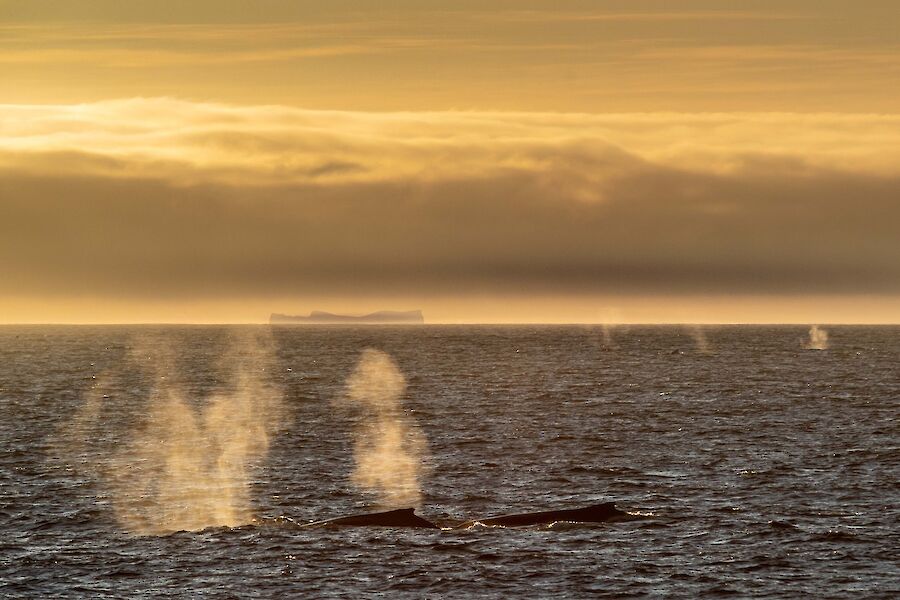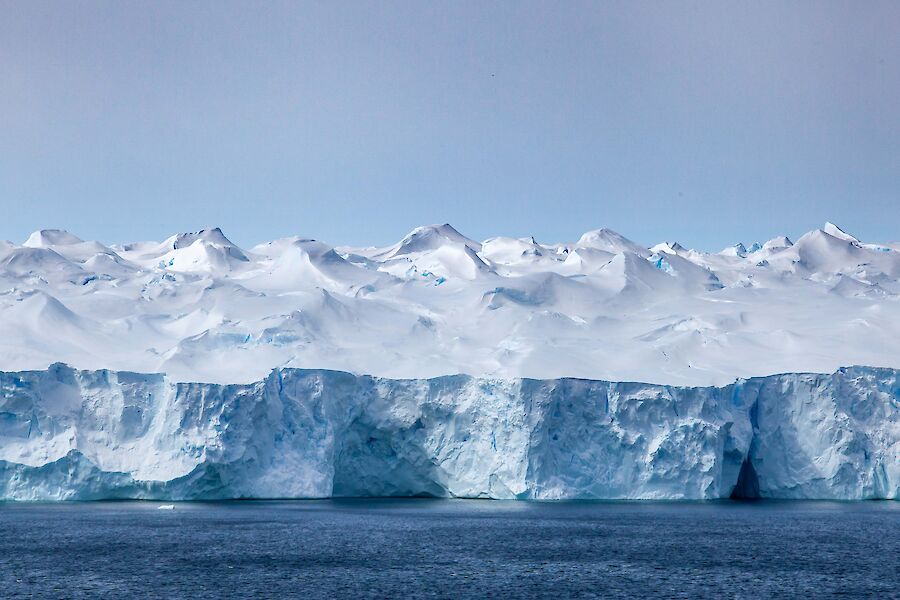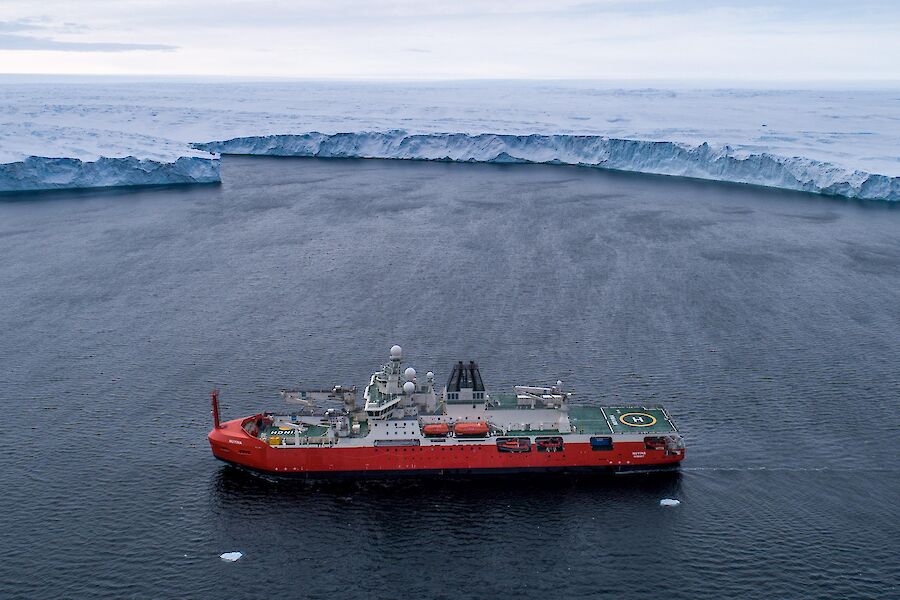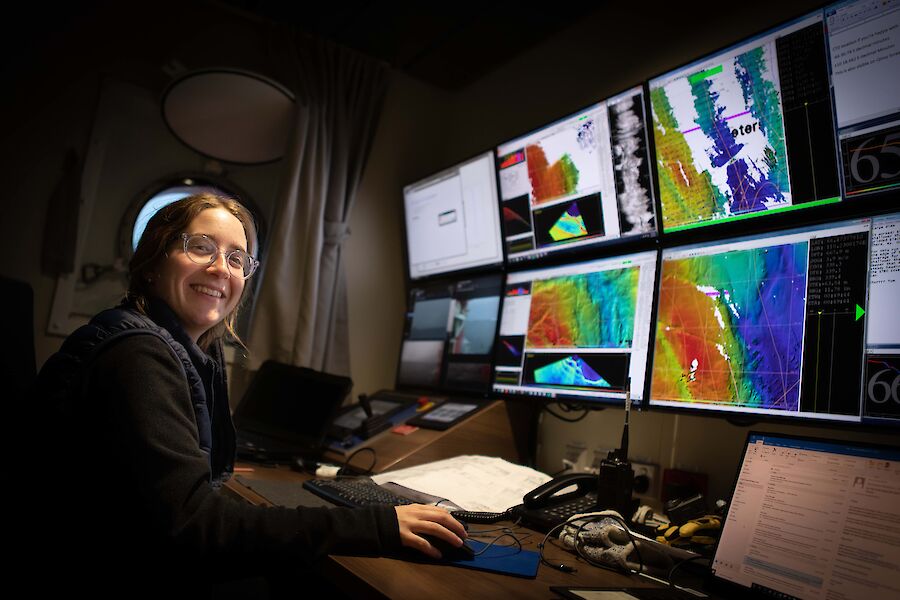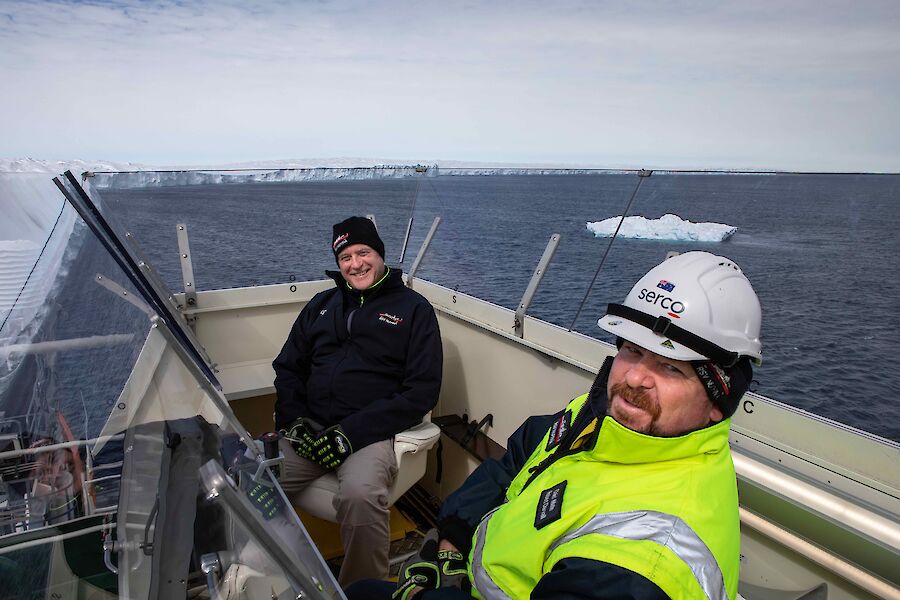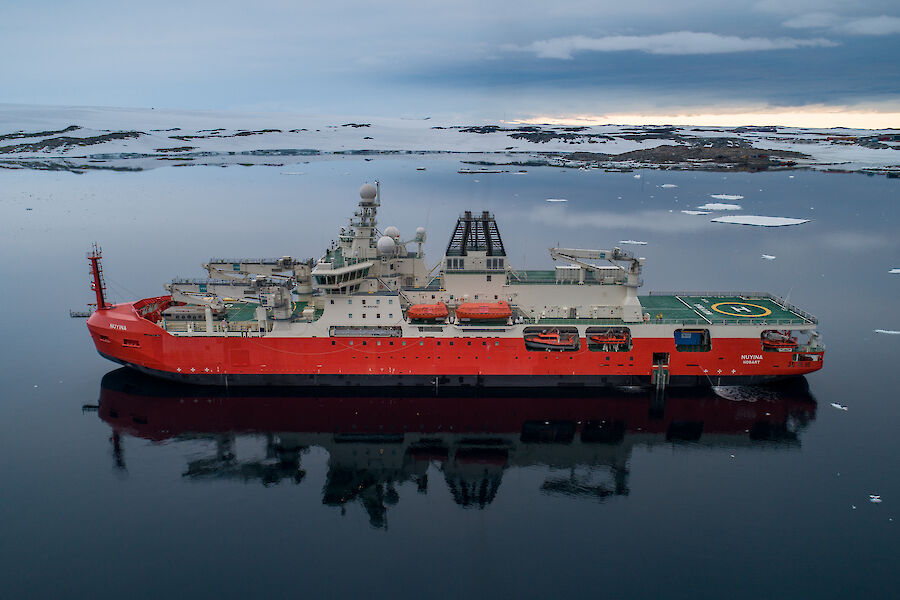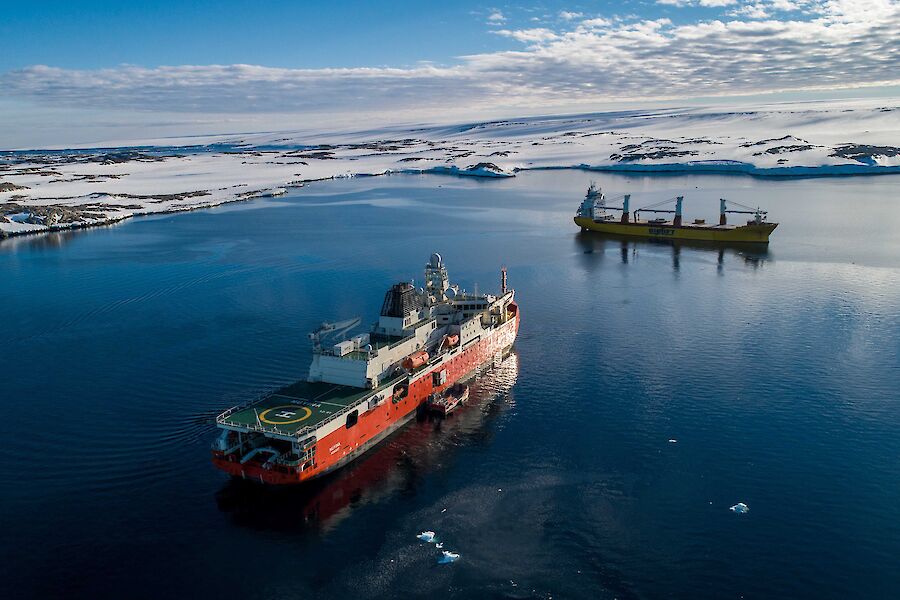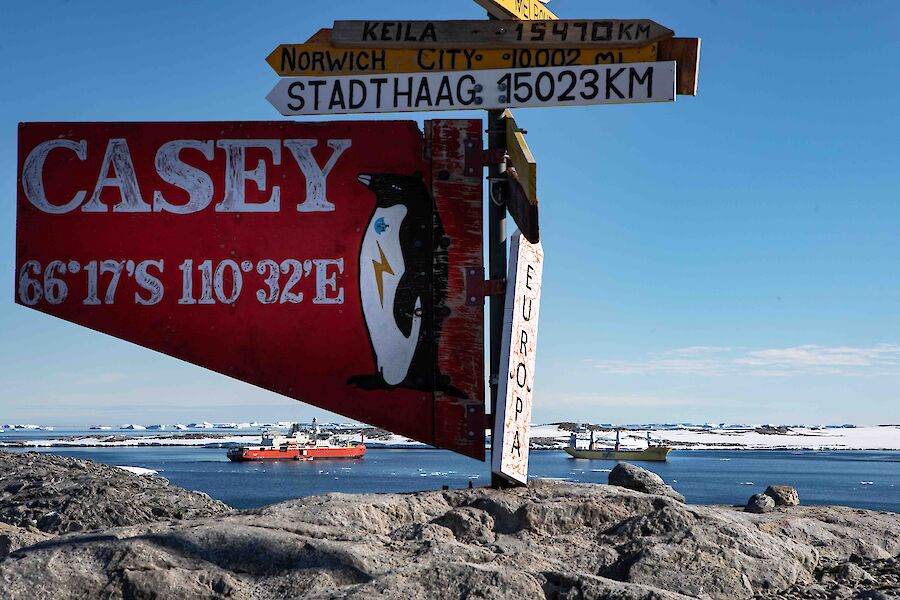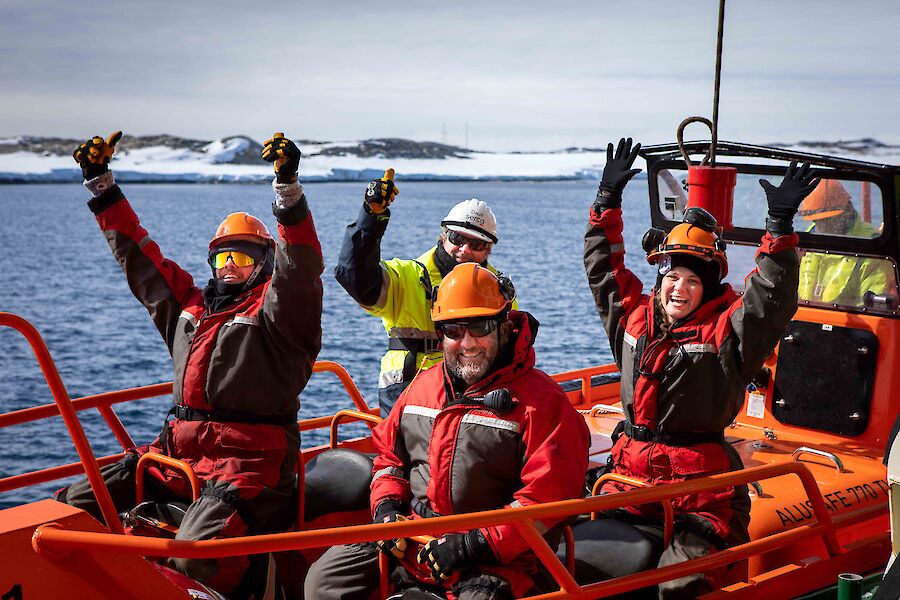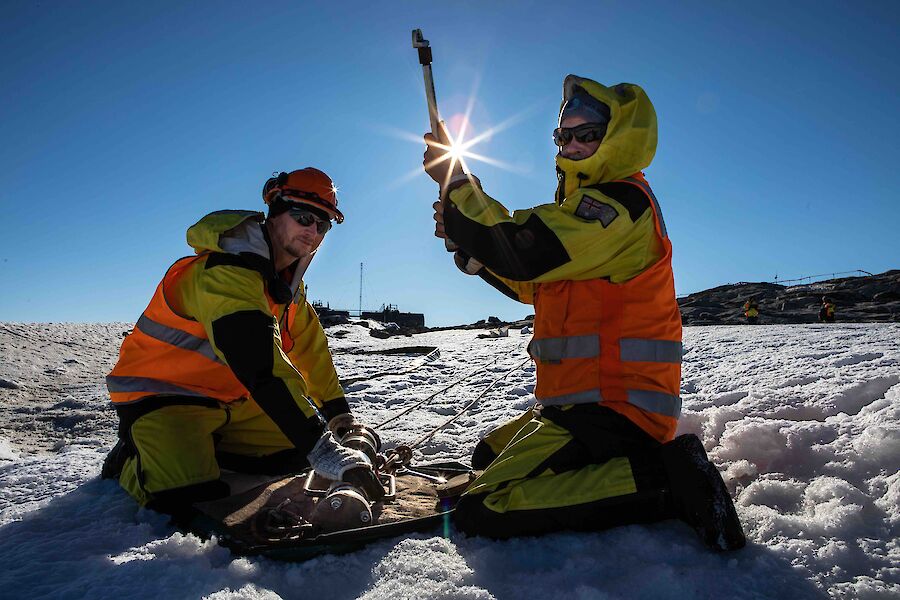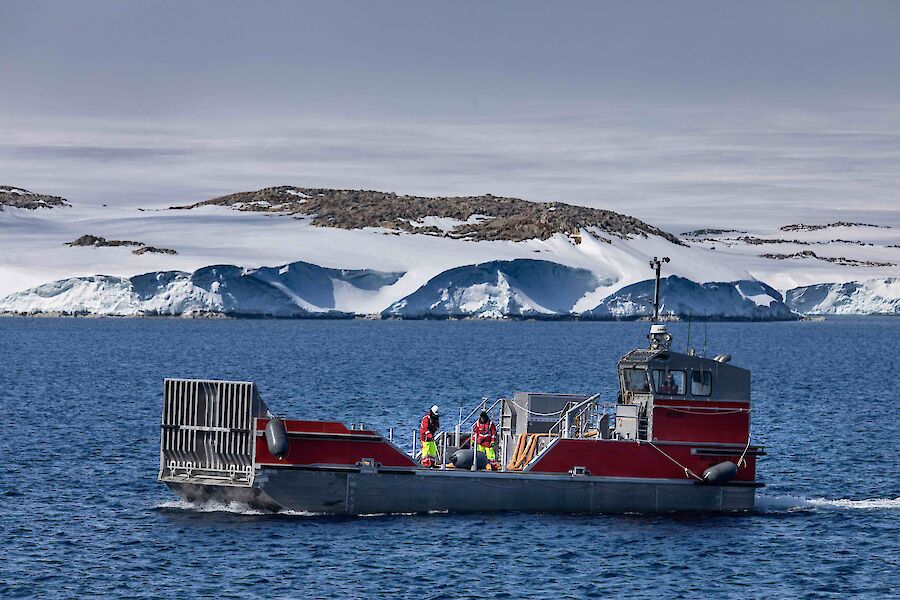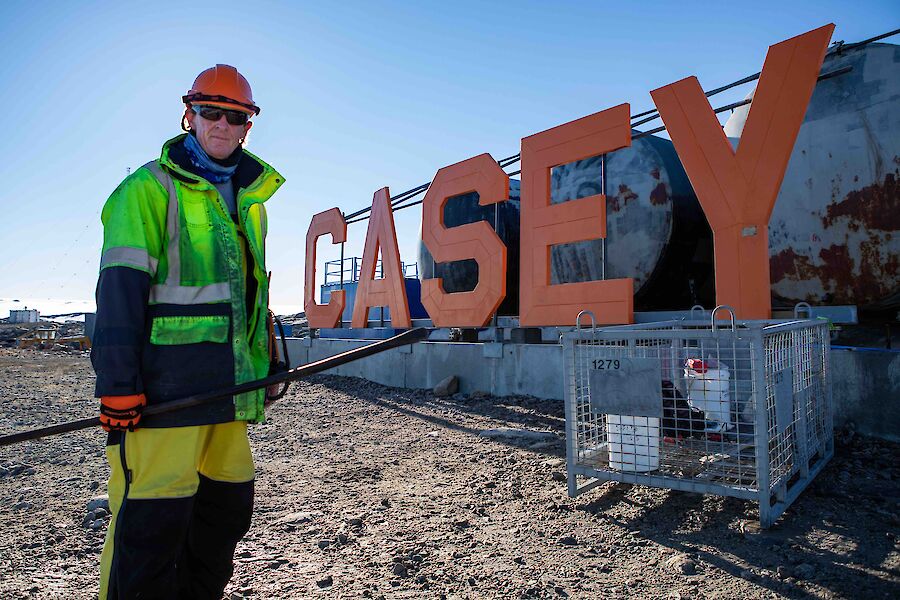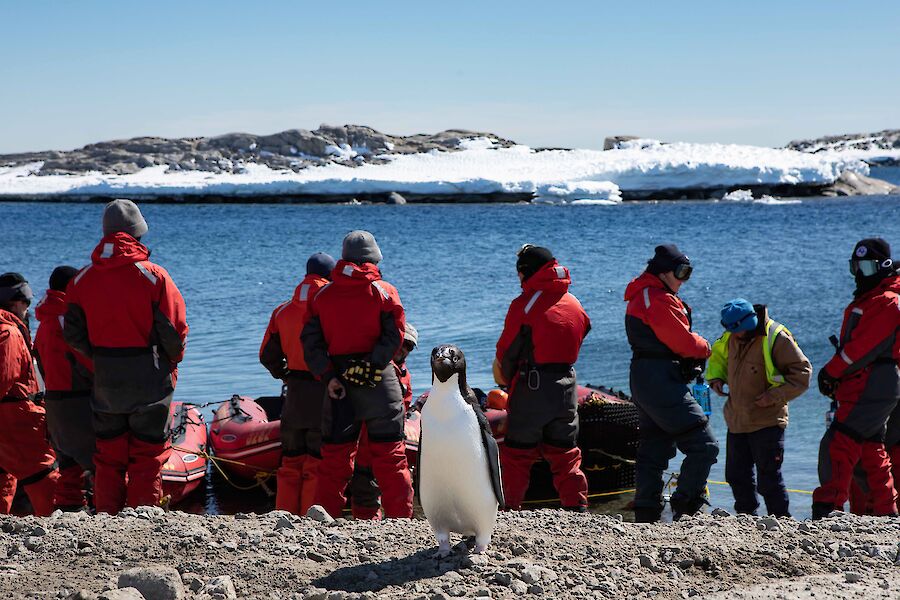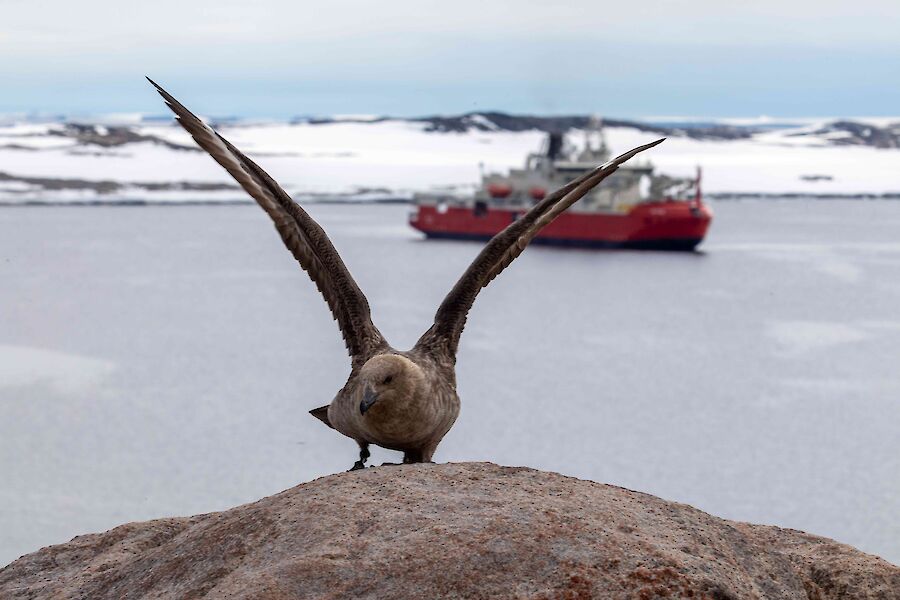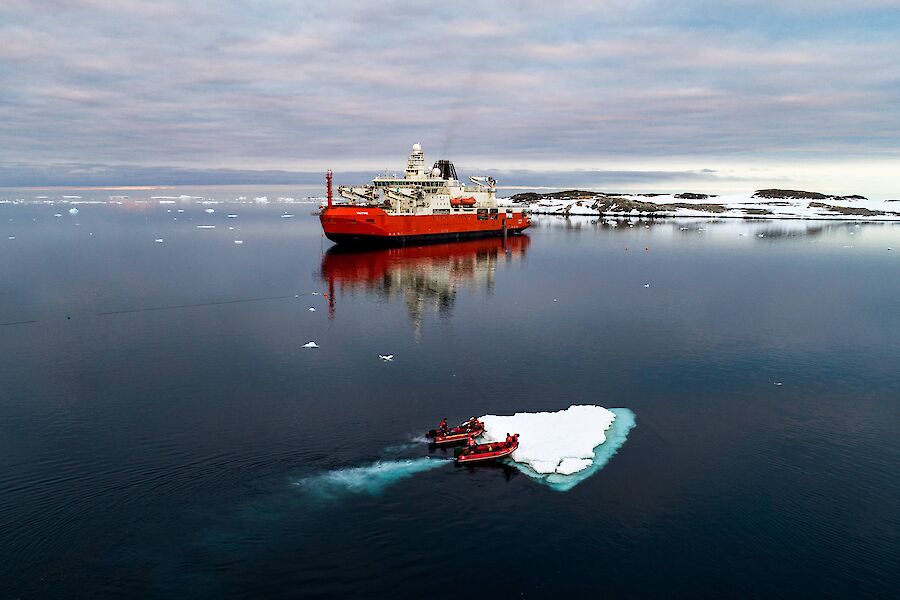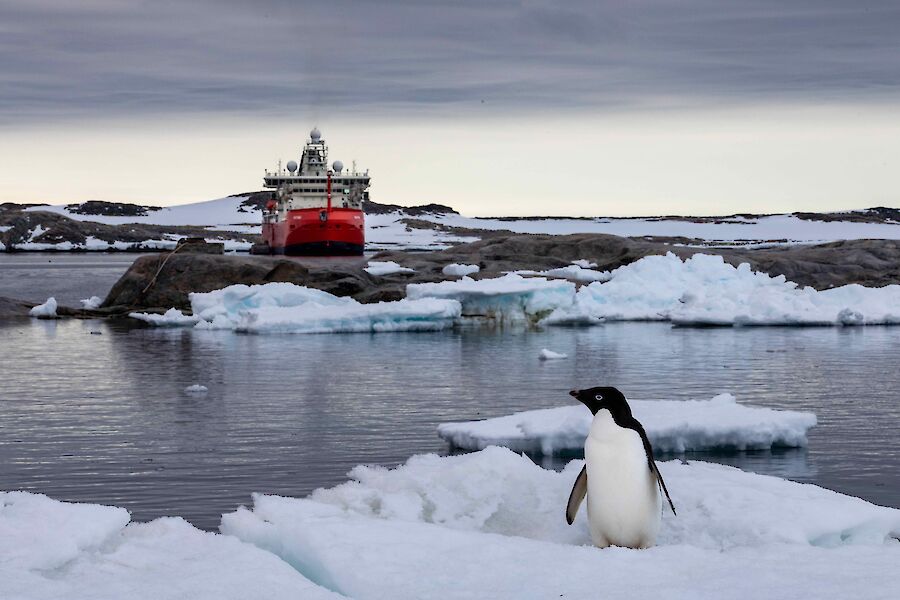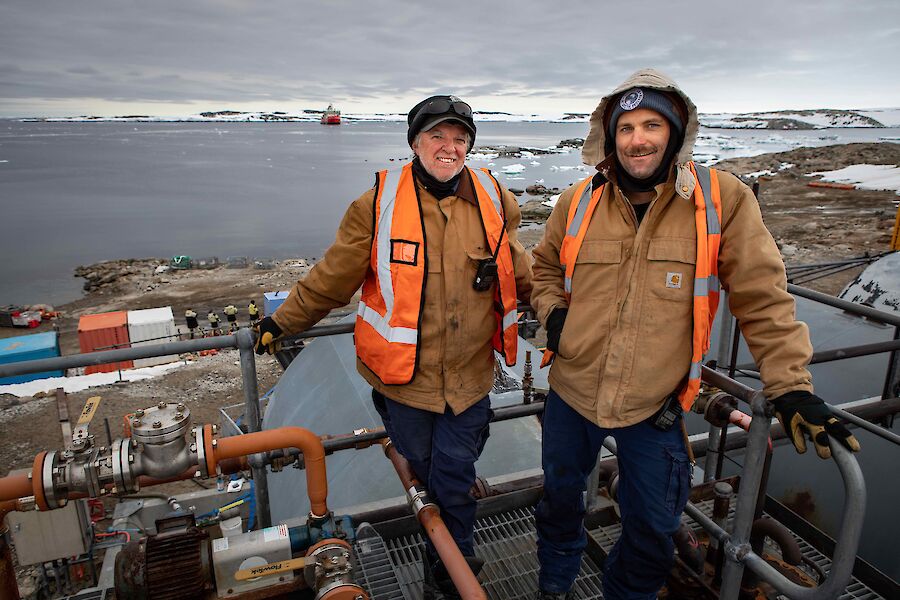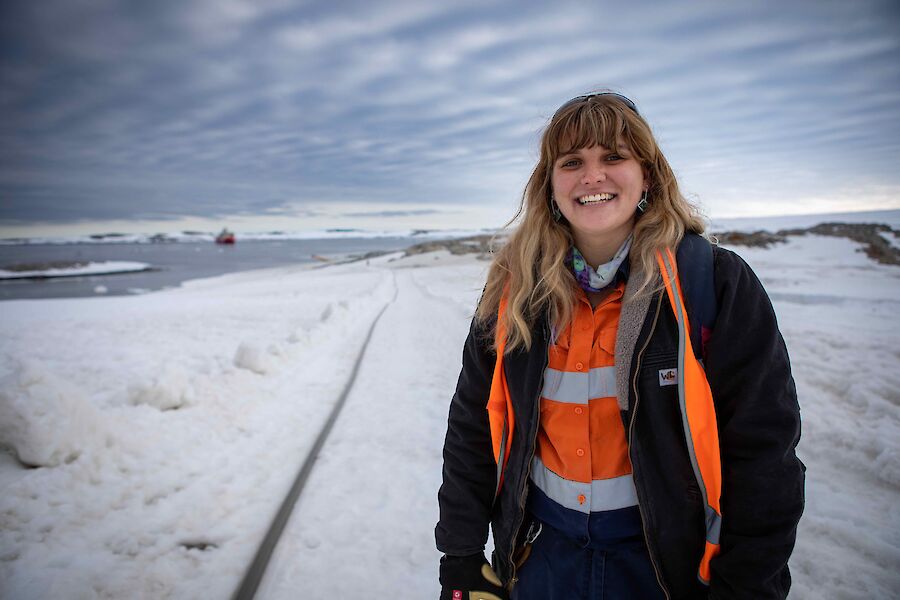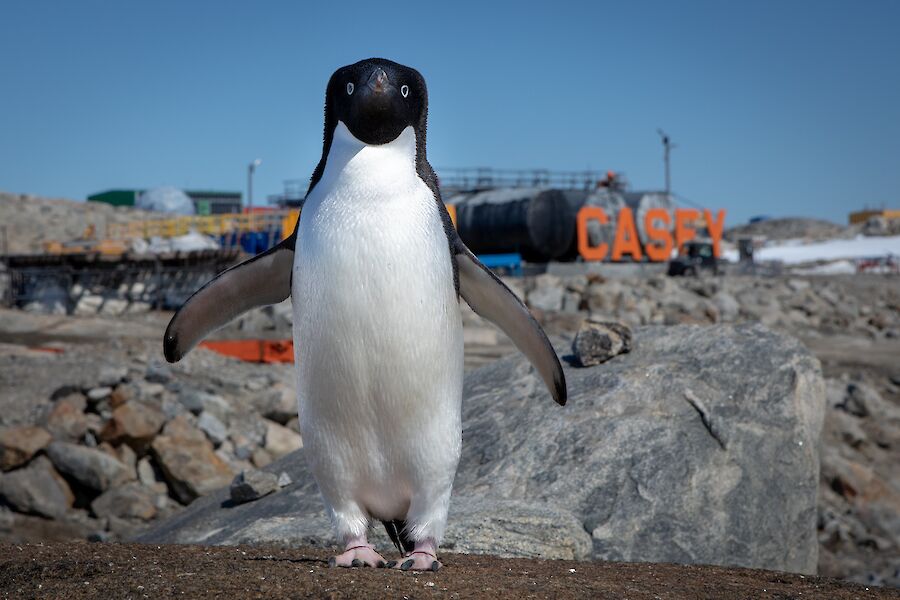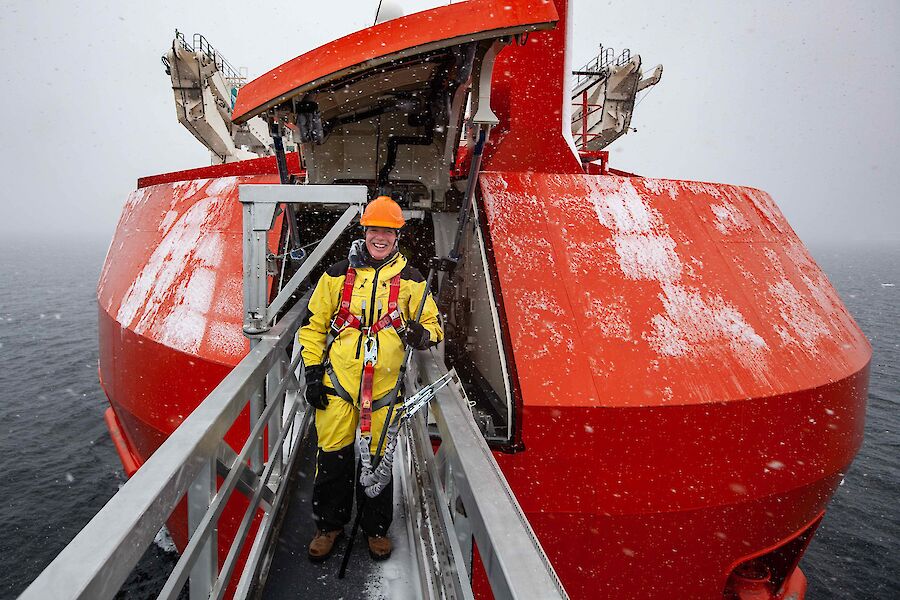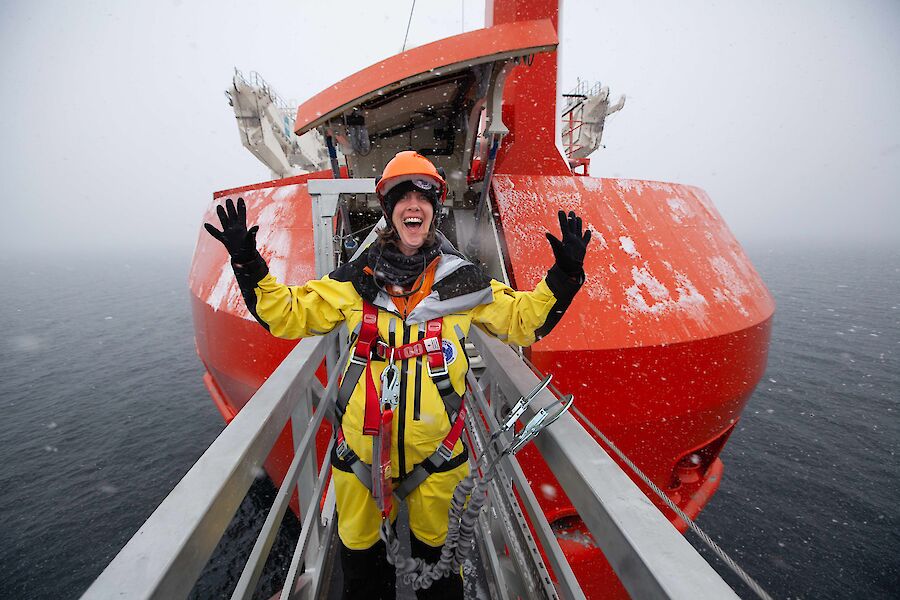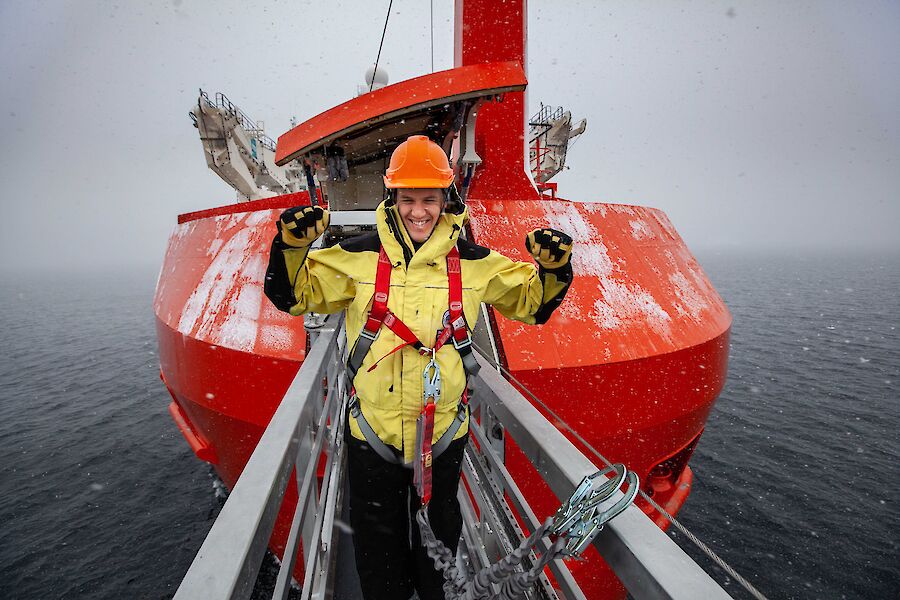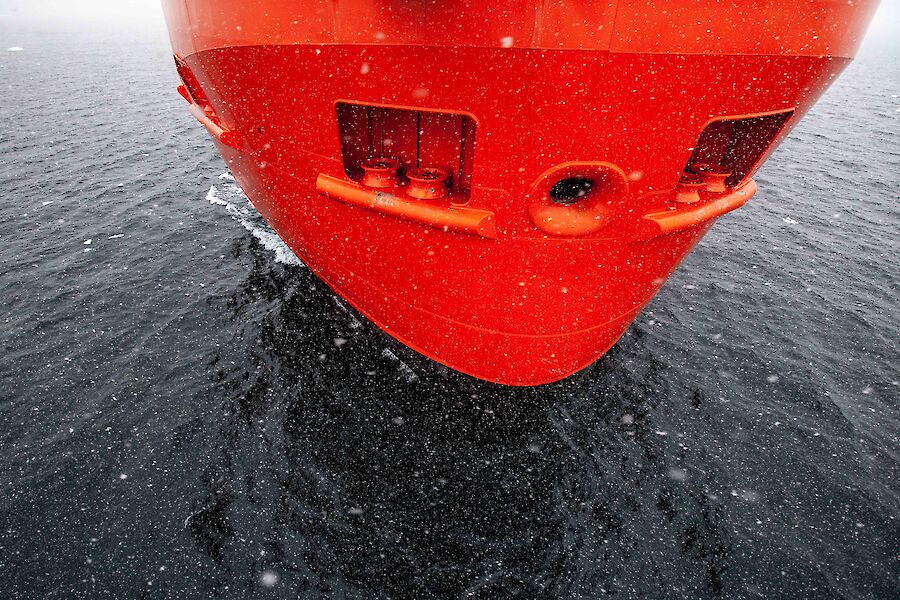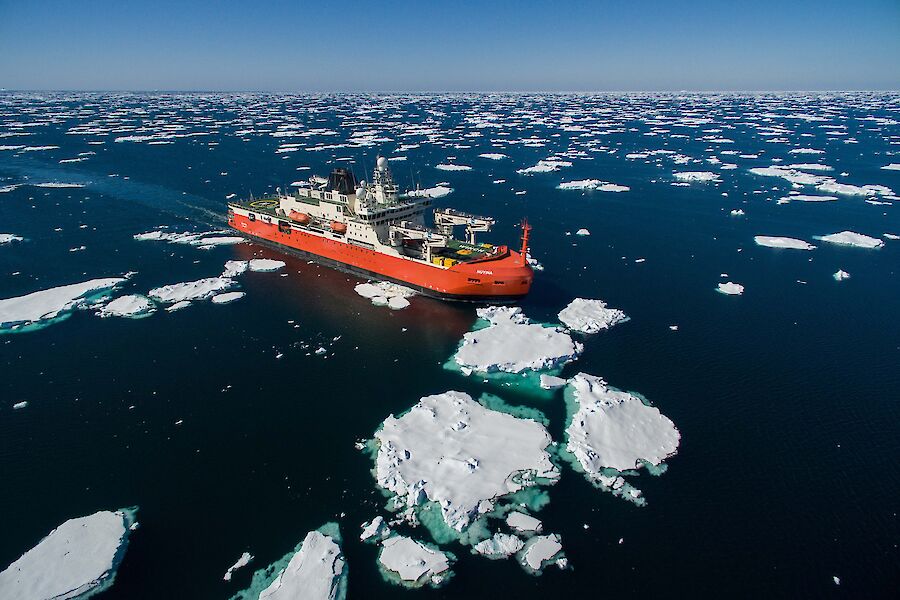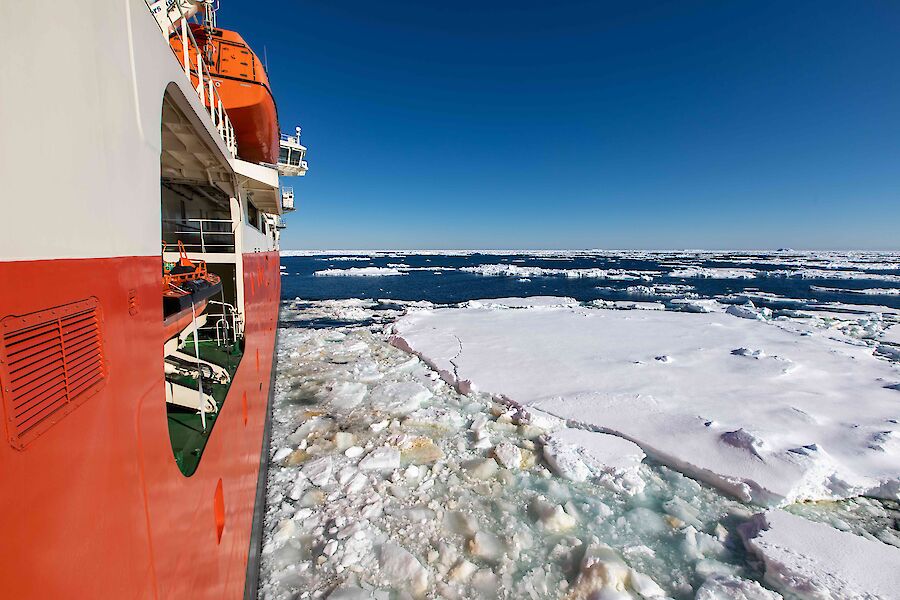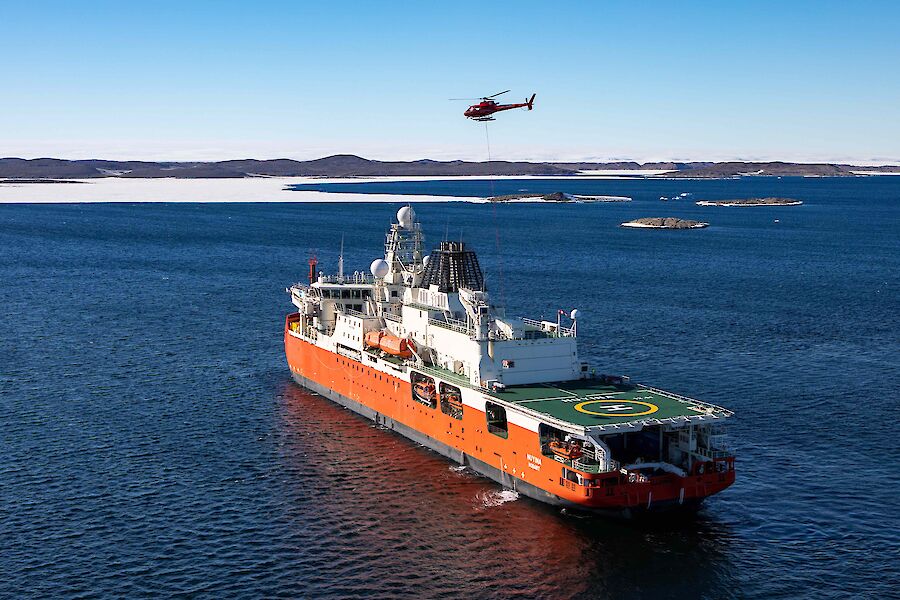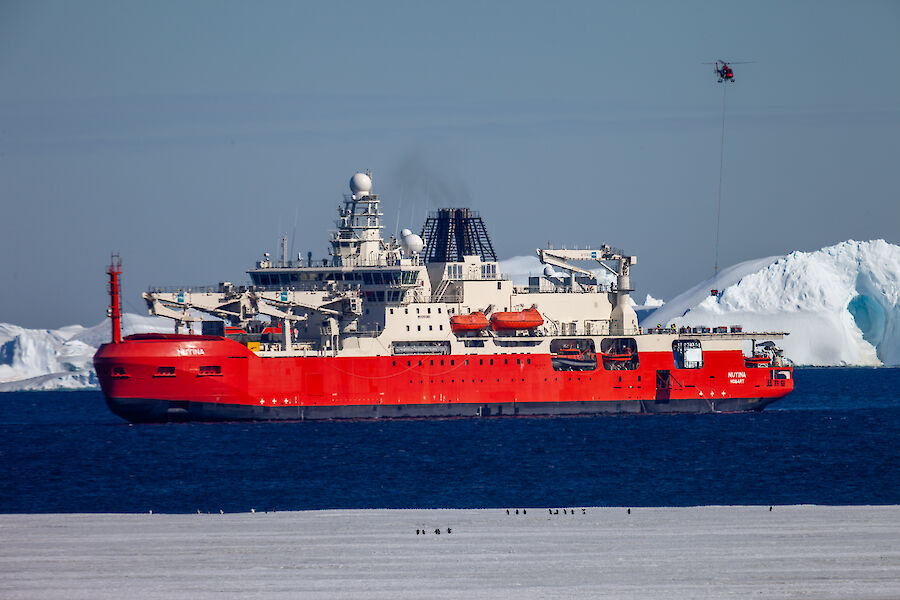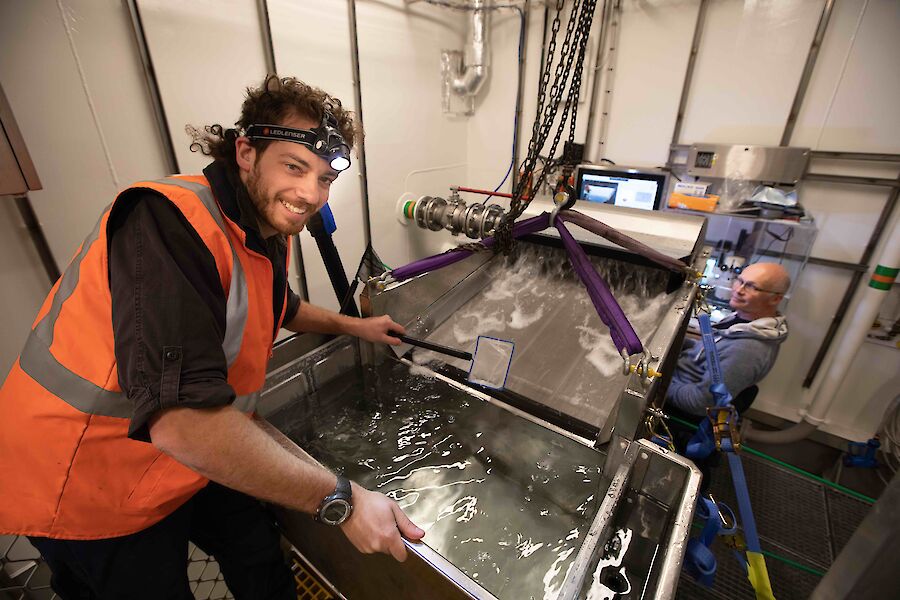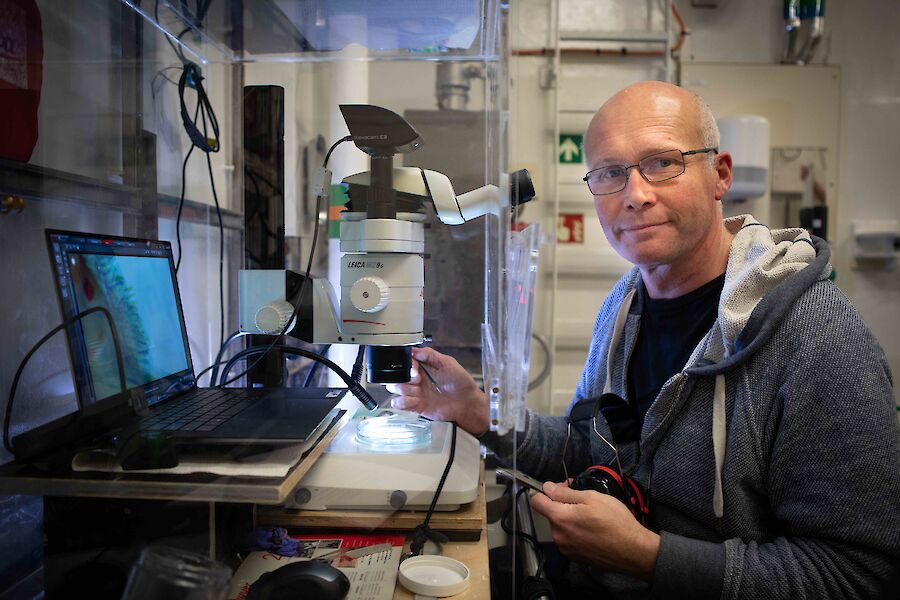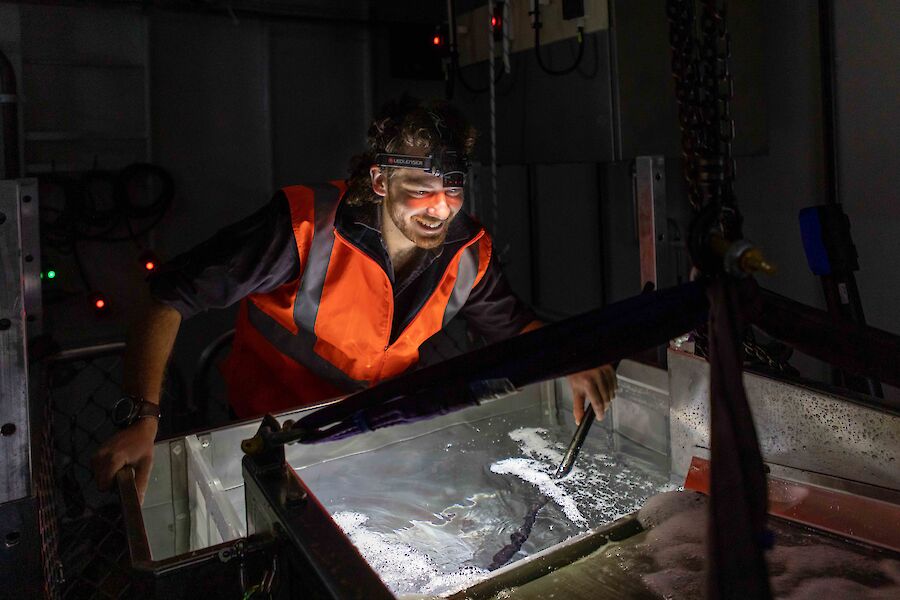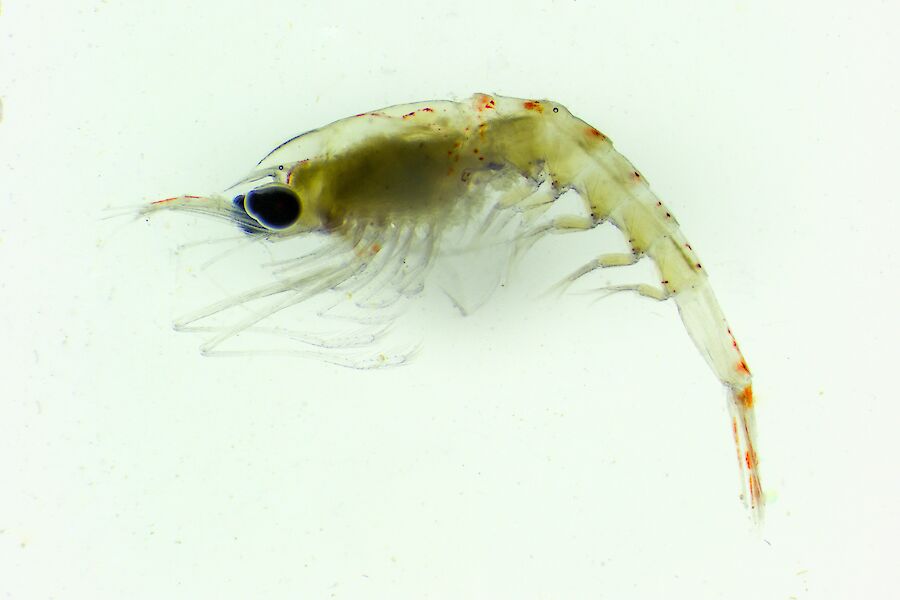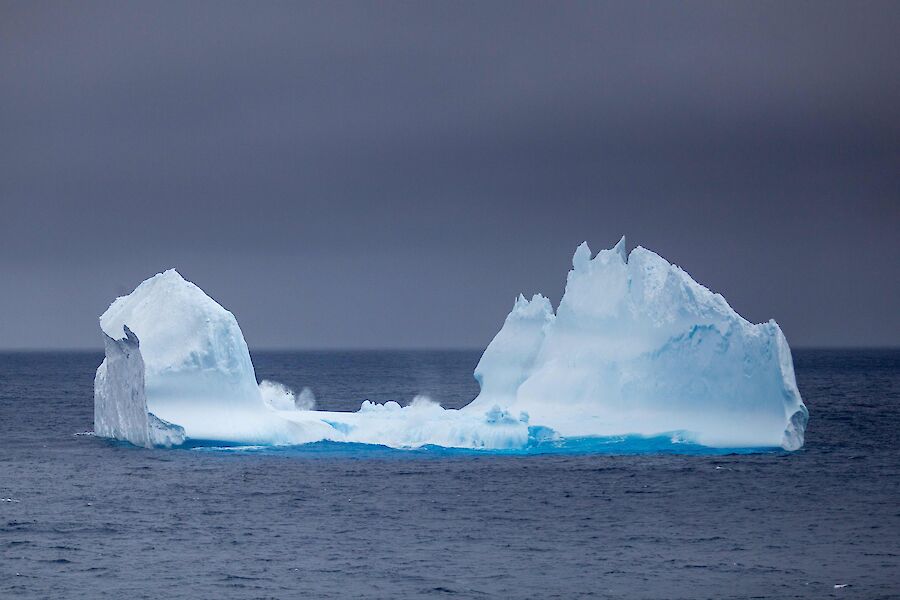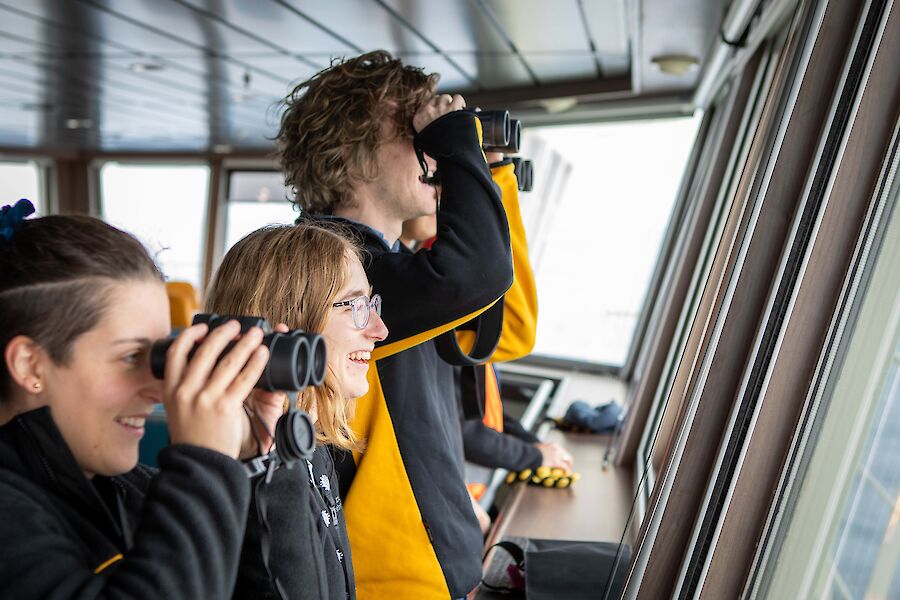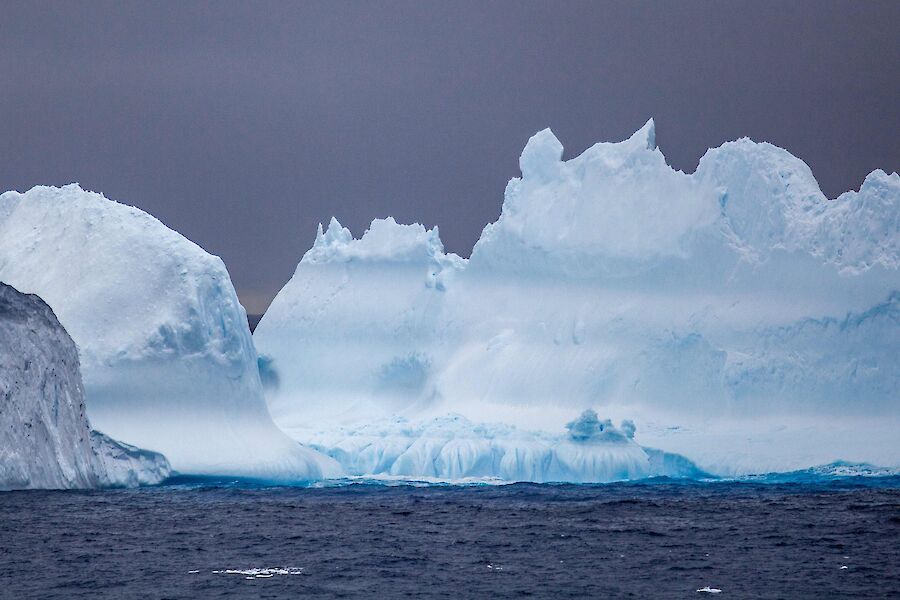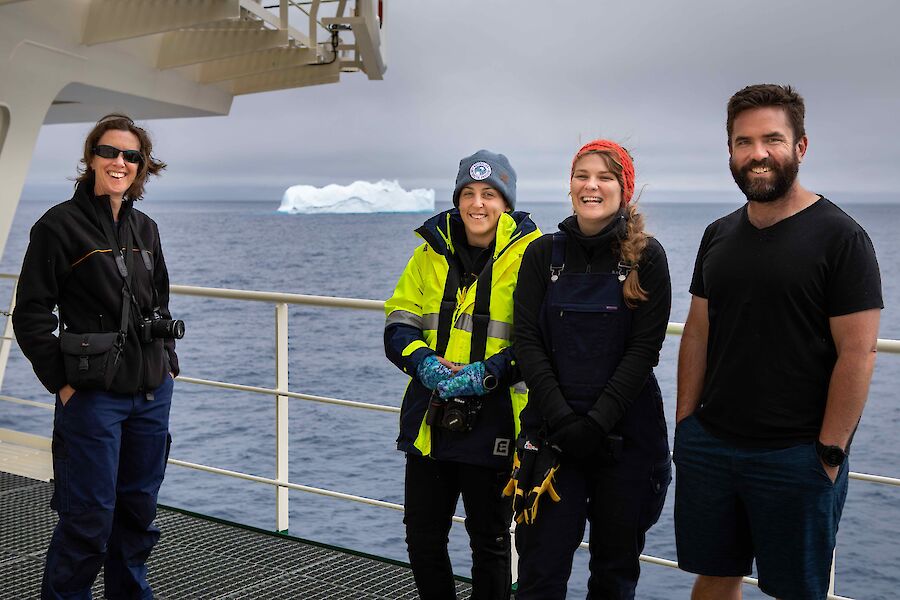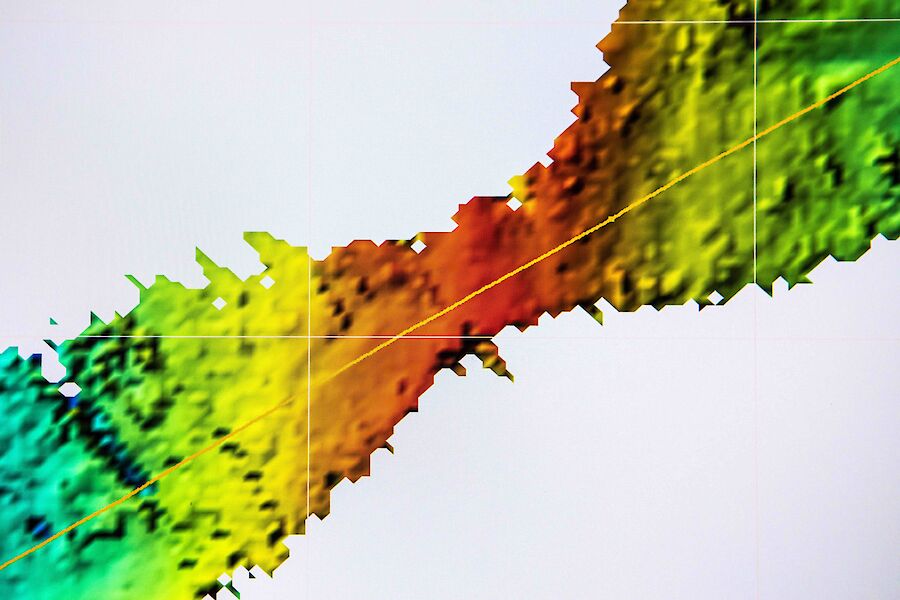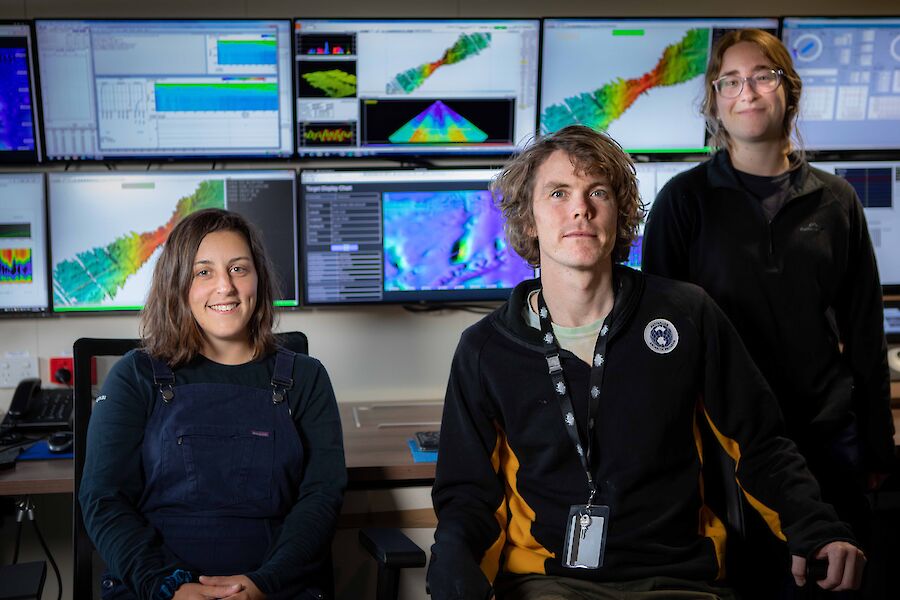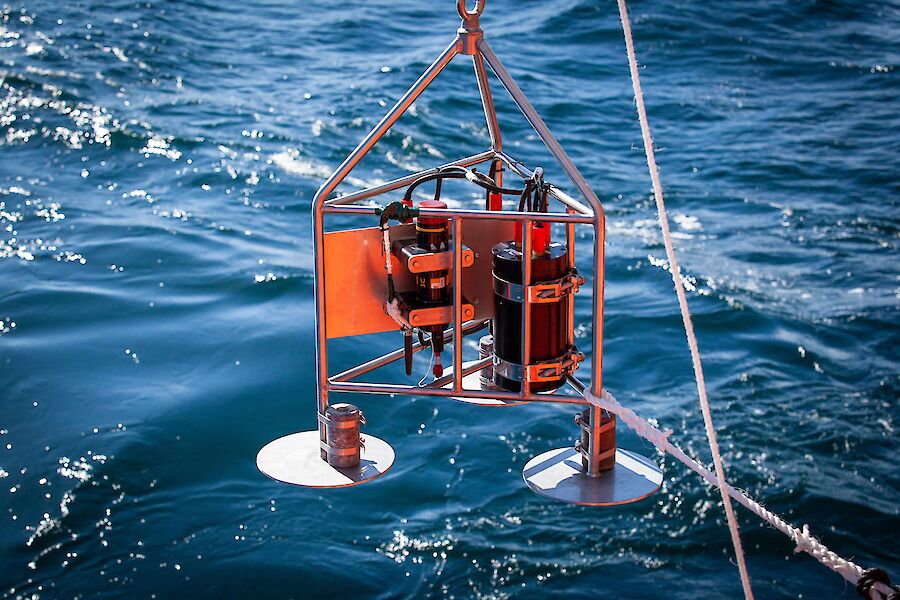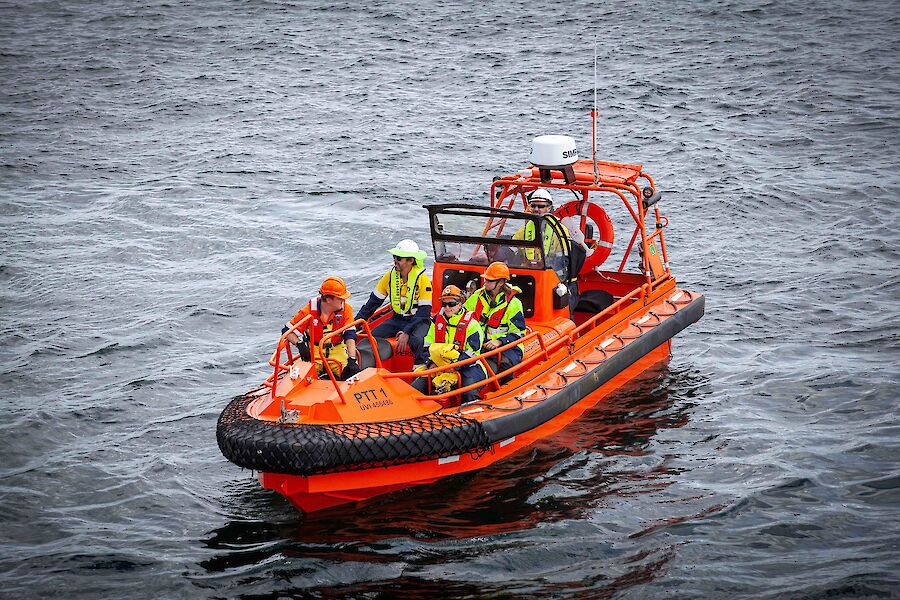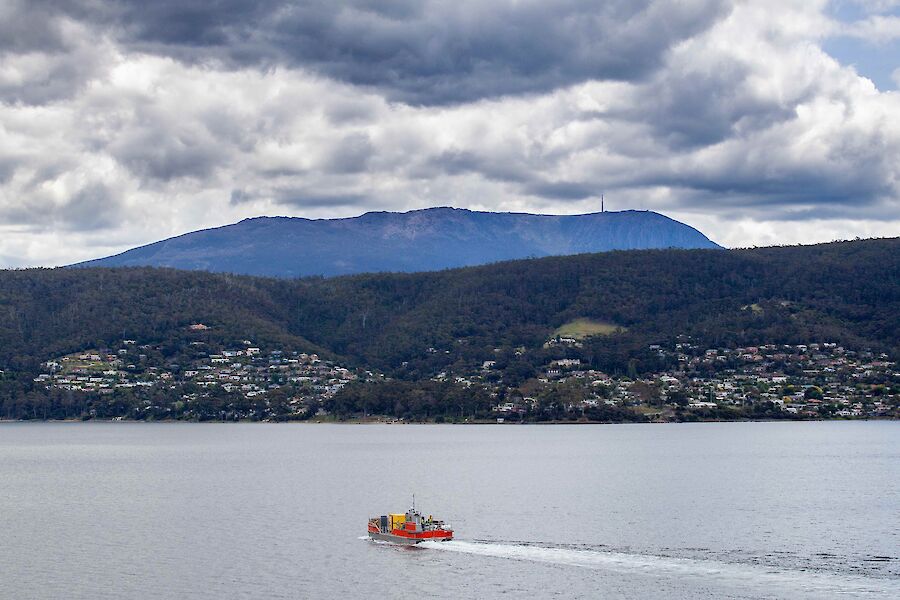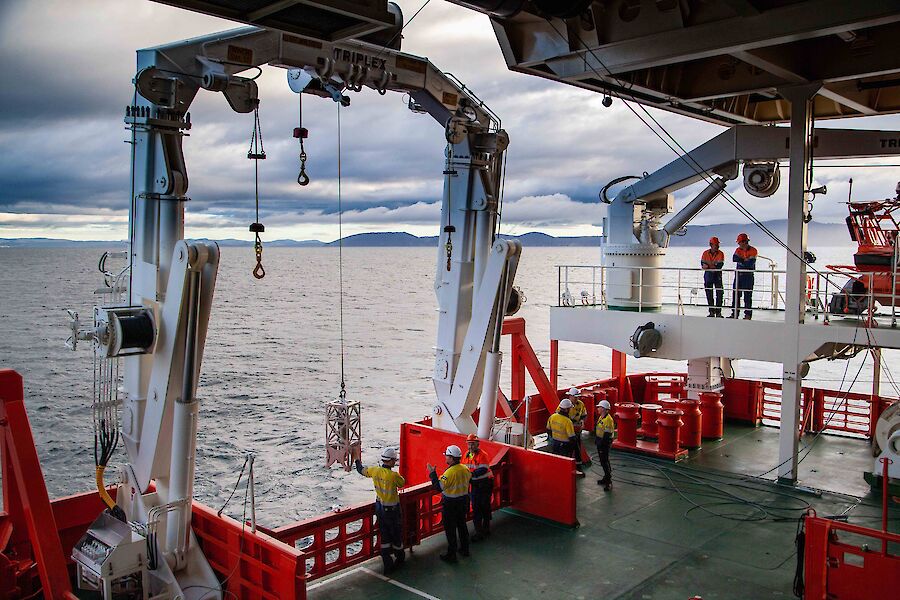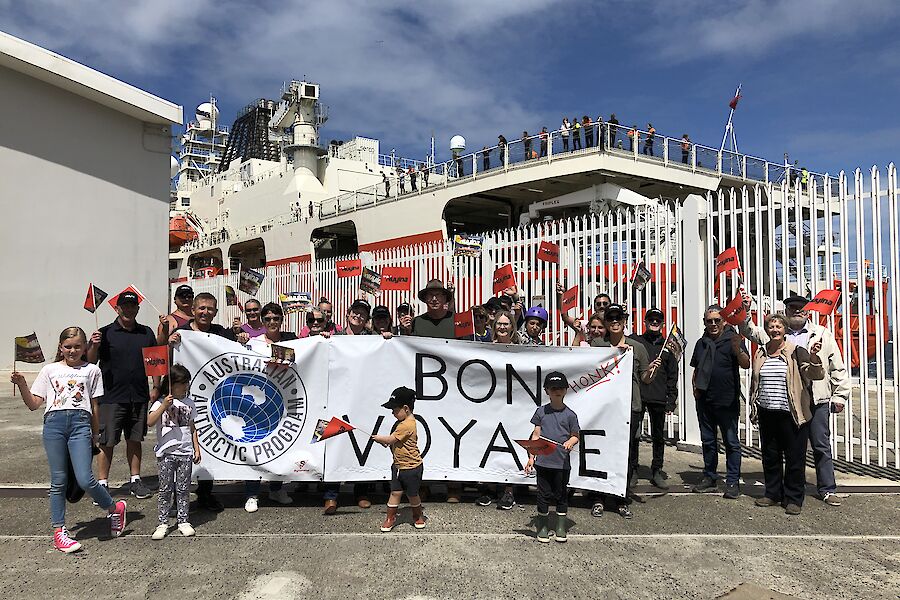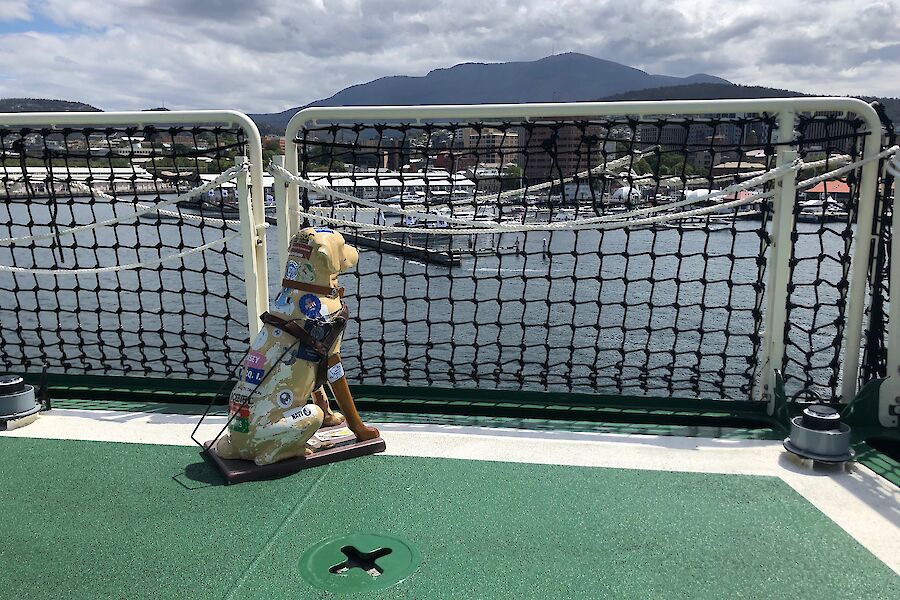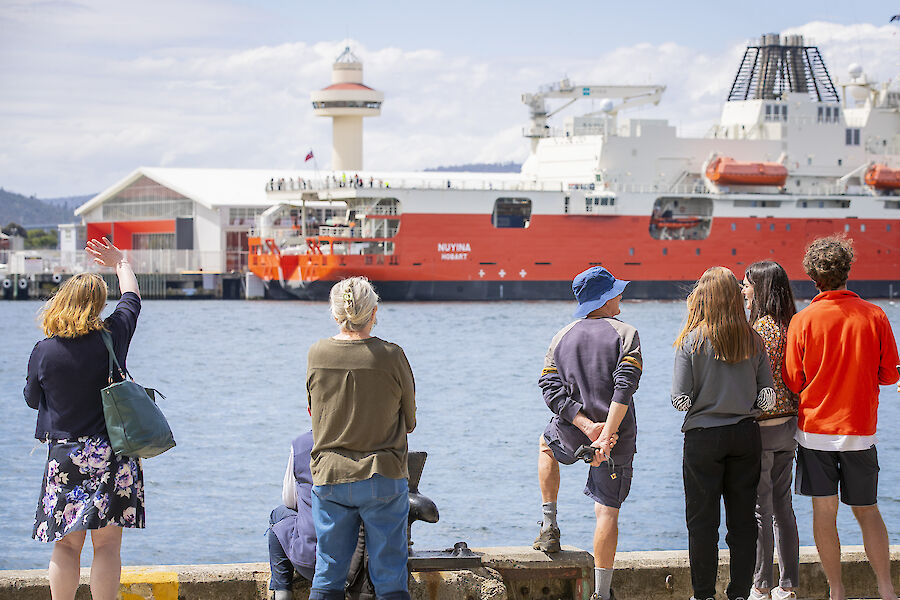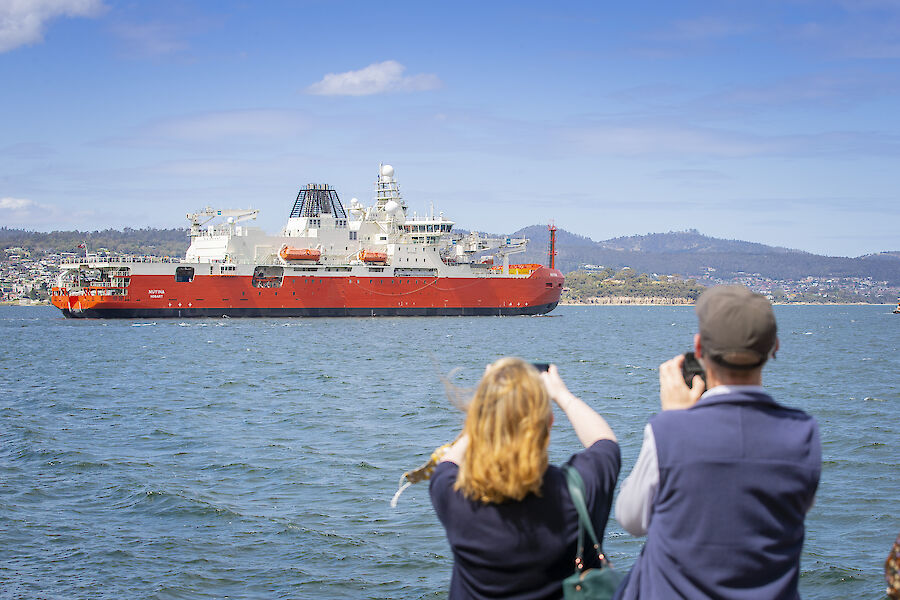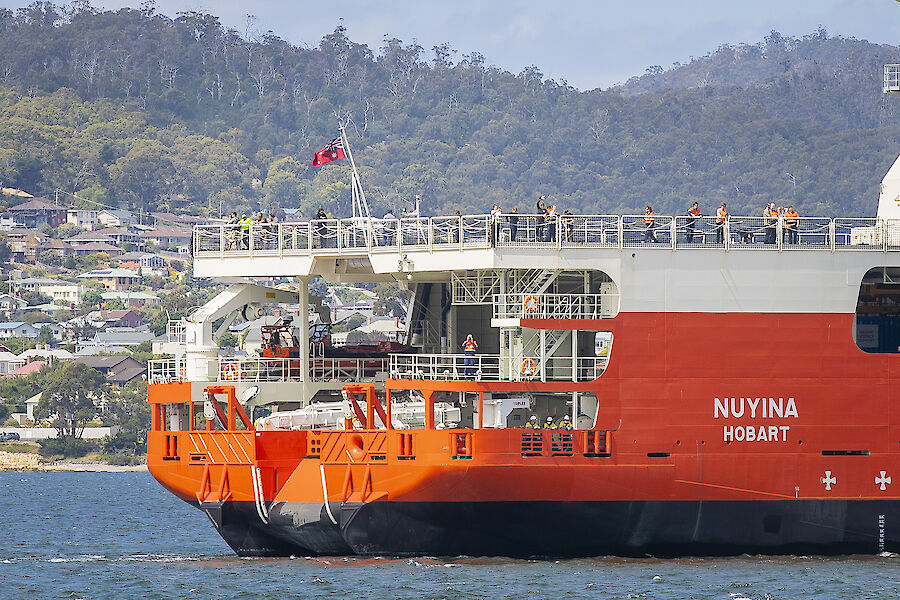
05
2021–2022
There's no place like home
27 March 2022
RSV Nuyina, Voyage 5, 2021–2022
47.9°S, 151.6°E – 11,656 km travelled
Hobart turned on the weather to welcome home RSV Nuyina and more than 100 returning expeditioners after a successful six week resupply voyage to Davis and Macquarie Island research stations. This brings to an end Nuyina's remarkable first Antarctic summer season which saw all four stations resupplied, utilising more ships concurrently than ever before and a return to full aviation operations, all while navigating an ever changing COVID-19 environment.
Congratulations and thank you to all those who have contributed to the success of the 2021-22 summer season.
How do you get 350 tonnes of building supplies on to a remote sub-Antarctic island?
21 March 2022
RSV Nuyina, Voyage 5, 2021–2022
54.5°S, 158.9°E – 10,682 km travelled
Piece-by-piece of course! Our amazing team have been working hard to offload 350 tonnes of building supplies from RSV Nuyina to Macquarie Island using amphibious vehicles (boats with wheels called LARCs). The cargo was delivered through the surf and up the rocky beach to station where a specialist team of tradespeople - also successfully delivered by Nuyina - will soon commence on-ground works for the Macquarie Island Modernisation Project (MIMP).
The renovation of the 74-year-old station is expected to take seven years to complete and will be reusing and recycling as much material from the current station as possible.
Operation Resupply begins
12 March 2022
RSV Nuyina, Voyage 5, 2021–2022
54.5°S, 158.9°E – 10,580 km travelled
After weeks of blue seas and icy landscapes Nuyina sailed along Macquarie Island's lush green eastern coastline, before dropping anchor near station in Buckles Bay. Known colloquially as 'the sponge' because of its damp, soggy landscape, Macca's verdant colours filled the view from the observation deck as resupply operations immediately got underway. As 46 expeditioners were delivered ashore ready for inductions and briefings, helicopters took to the air with sling-loads of operational cargo and 'watercrafties' hit the waves in LARCs (boats with wheels) and IRBs (inflatable rigid boats).
Meeting Macca
11 March 2022
RSV Nuyina, Voyage 5, 2021–2022
57.0°S, 152.4°E – 10,060 km travelled
Excitement builds on board RSV Nuyina as last stop Macquarie Island (Macca) comes in to view. Another first for Nuyina and for many others on board. With a glorious sky above it was the perfect opportunity for a group photo of the lucky expeditioners who will soon call Macca home. Of course we couldn't miss an opportunity to capture them decked out in their snazzy 'banana skins'.
Now, just the small matter of a station resupply and handover to complete. No rest for the wicked!
Can anybody hear me?
3 March 2022
RSV Nuyina, Voyage 5, 2021–2022
63.5°S, 80.3°E – 6,243 km travelled
Leaving the ice edge behind, RSV Nuyina slowed to approach the last known position of an existing Moored Acoustic Recorder (MAR), placed on the ocean floor by the Antarctic Division to eavesdrop on whales and record their underwater calls. Using hydrophones and data recorders to capture the noise of the Southern Ocean, the moorings can record continuously for 15 months at depths of up to 3,000 metres.
Similar to our KOMBIs, the mooring features an acoustic release system which is triggered by a hand-held transducer, with floats bringing it to the surface in around 10-15 minutes.
Our eagle-eyed expos had a whale of a time looking out for the MAR bobbing on the waves, before hoisting it aboard for storage, ready for its return to Hobart.
What goes down must come up?
2 March 2022
RSV Nuyina, Voyage 5, 2021–2022
67.0°S, 75.0°E – 5,765 km travelled
Deployed during a krill research voyage in early 2021, the ‘Krill Observational Mooring for Benthic Investigations’ (KOMBI) has spent a year sitting on the Antarctic sea floor observing krill. One of the jobs for RSV Nuyina on this voyage was to retrieve it and bring the data home.
Using video and echosounders to record movement around and above it, the KOMBI will help us understand how krill use the deep sea floor and its importance as habitat over winter.
Knowing where they left it, the KOMBI is sent a code from Nuyina which releases the weights, allowing it to float to the surface. First person to spot it gets bragging rights, which can spark some friendly competition on board.
Heli ops are go!
28 February 2022
RSV Nuyina, Voyage 5, 2021–2022
66.8°S, 77.5°E – 5,325 km travelled
RSV Nuyina has arrived at Davis research station to pick up helicopters used for operations over summer and deliver a few more slingloads of cargo. Next stop: Macquarie Island for resupply and to give expeditioners a lift home. Oh, and we've included a couple of pictures of icebergs encountered on the way, just because.
Enjoy the euphonious sound
26 February 2022
RSV Nuyina, Voyage 5, 2021–2022
62.8°S, 94.7°E – 4,348 km travelled
Relax and enjoy the sound of Nuyina cruising through some pack ice
Oh buoy do we love science!
25 February 2022
RSV Nuyina, Voyage 5, 2021–2022
62.7°S, 104.0°E – 3,869 km travelled
Expeditioners on board released 25 solar-powered buoys to measure ocean and sea ice movement in the Southern Ocean as part of a global sensor network.
For the next few years the Sofar Ocean buoys will provide baseline wave data and meteorological information in an under-sampled area of the Southern Ocean. This will inform planning for an intense Australian Antarctic Program field season in the marginal ice zone (the transition zone between open ocean and consolidated sea ice), in late 2023.
First iceberg
22 February 2022
RSV Nuyina, Voyage 5, 2021–2022
59.2°S, 129.8°E – 2,422 km travelled
Always a highlight on any voyage, the first official sighting of an iceberg is made by an eagle-eyed expo - and isn't it a beauty!
Chasing rainbows
18 February 2022
RSV Nuyina, Voyage 5, 2021–2022
45.9°S, 146.8°E – 428 km travelled
What lies at the end of the rainbow? RSV Nuyina looks close to finding out. Most likely it'll be more 5 metre swells when crossing the Southern Ocean. We hope our expeditioners have already found their sea legs.
Lights, camera, action!
16 February 2022
RSV Nuyina, Voyage 5, 2021–2022
42.9°S, 147.3°E – 7 km travelled
We can't get enough of this beautiful video of RSV Nuyina as it departs the Derwent on its second voyage to Antarctica. Australia's new ice breaker will be an impressive sight as it sails through the Southern Ocean on the way to Davis station.
With thanks to White Spark Pictures for the video.
‘LARCing’ around on the river
14 February 2022
RSV Nuyina, Voyage 5, 2021–2022
42.9°S, 147.3°E – 0 km travelled
Before heading south to Antarctica RSV Nuyina is spending some time off the Tasmanian coast testing our ‘boats with wheels’, otherwise known as LARCs (Lighter, Amphibious, Resupply, Cargo).
These multi-tasking wonders can power through the surf and drive up the rocky beach. Perfect for delivering cargo to our sub-Antarctic research station at Macquarie Island.
All aboard!
13 February 2022
RSV Nuyina, Voyage 5, 2021–2022
42.9°S, 147.3°E – 0 km travelled
Excited for the journey ahead, our expeditioners emerged from pre-departure quarantine to don their masks and board their home for the next six weeks. With a final wave to well-wishers and family, RSV Nuyina sailed out of Hobart to undertake a resupply of Davis and Macquarie Island research stations.
Spectacular Antarctic spam alert!
22 January 2022
RSV Nuyina, Voyage 2, 2021–2022
63.2°S, 112.2°E – 8,880 km travelled
Our on board photographer certainly knows how to capture a great image. Check out these amazing shots taken at the Petersen Bank as Nuyina continues its journey home to Hobart.
It’s simply Vanderford
18 January 2022
RSV Nuyina, Voyage 2, 2021–2022
66.2°S, 110.2°E – 7,960 km travelled
At nine kilometres wide, Vanderford Glacier is one of the biggest in east Antarctica and funnels off winds like a gigantic cooling fan — very handy to test some of the ship’s systems, including the multibeam echosounder. Much to everyone’s delight the acoustics team discovered a deep canyon beneath the glacier that has never been mapped before. Read more about the discovery by clicking on the Stories menu.
And that's a wrap!
17 January 2022
RSV Nuyina, Voyage 2, 2021–2022
66.3°S, 110.5°E – 7,960 km travelled
RSV Nuyina’s first refuelling of an Antarctic station is complete, helped by a lucky weather window of calm days and glassy seas. As the ship heads home from Casey research station clouds rolled in over Newcomb Bay – and some on board rolled around on the helideck in a spelling bee. Can you guess what it says?
In Casey you missed it!
14 January 2022
RSV Nuyina, Voyage 2, 2021–2022
66.2°S, 110.5°E – 7,947 km travelled
In Casey you missed it… expeditioners and crew on RSV Nuyina are thrilled to arrive at Casey research station for the first time, joining Happy Dragon in Newcomb Bay. Nuyina's on-board mini-fleet of boats and barge is preparing to help with pumping a shipload of fuel to shore. Happy Dragon continues to transfer cargo in our largest resupply operation ever.
Shortly after arrival, refuelling the tanks at Casey station begins, involving a complex dance between ship and shore using kilometres of fuel hose. The process demands careful planning, a comprehensive checklist and occasionally a few prods to move those pesky bergy bits out of the way. Lucky those penguins are there to supervise.
Go Gadget go!
12 January 2022
RSV Nuyina, Voyage 2, 2021–2022
62.9°S, 105.4°E – 7,595 km travelled
Our onboard media team look like they are having great fun on the FODS (Forward Outboard Deployment System) as Nuyina sails in to some Antarctic weather. Just don't look down!
Land Ahoy!
6 January 2022
RSV Nuyina, Voyage 2, 2021–2022
66.2°S, 76.5°E – 5,095 km travelled
Land Ahoy! Nuyina navigated safely through the bergy bits to arrive for the first time at Davis research station in east Antarctica. Delivering two helicopters and some much anticipated cargo, the buzz on station was palpable.
“Everyone was pretty excited. Many people have been waiting years to see this. And there’s a lot of excitement for the mail bags.” Dani Yannopoulos, Davis Station Leader
Thrill at the krill
4 January 2022
RSV Nuyina, Voyage 2, 2021–2022
63.1°S, 89.4°E – 4,150 km travelled
Scientists show their thrill at the krill captured during their first ‘wet well’ test in Antarctic waters. The wet well is a watertight room deep inside the ship that allows scientists to collect krill samples without damaging these delicate but scientifically important crustaceans.
Iceberg! Right ahead!
31 December 2021
RSV Nuyina, Voyage 2, 2021–2022
56.3°S, 129.0°E – 1,882 km travelled
Iceberg! Right ahead! Or more precisely abeam. Another historic first for our intrepid icebreaker was logged at 11.45am when Nuyina sailed past this beauty. To count as a sighting the berg had to be as big as the ship and visible to the naked eye. Binoculars surely not required!
RIDGY-DIDGE!
30 December 2021
RSV Nuyina, Voyage 2, 2021–2022
52.9°S, 135.8°E – 1,308 km travelled
RIDGY-DIDGE: RSV Nuyina bags its first deepsea mountain peak – a seamount higher than Mount Kosciuszko. At more than 2,500 m high, 29 km wide and 45 km long, the seamount is the first big feature mapped by the ship’s multibeam echosounders on its way to Antarctica.
Boxing day bow waves
26 December 2021
RSV Nuyina, Voyage 2, 2021–2022
43.2°S, 147.5°E – 19 km travelled
Nothing like a few lively bow waves to help you find your sea legs! Having left Tasmania behind, Nuyina is powering its way through 6 metre swells and 30+ knot winds.
Testing, testing, 1,2,3.
24 December 2021
RSV Nuyina, Voyage 2, 2021–2022
42.9°S, 147.3°E – 0 km travelled
Once away from port our team tested the refuelling systems and calibrated the acoustic instruments, before sailing out the Derwent and heading south to the icy continent.
And they’re off!
23 December 2021
RSV Nuyina, Voyage 2, 2021–2022
42.9°S, 147.3°E – 0 km travelled
And they’re off! Australia’s brand new icebreaker, 67 lucky voyagers and a dog called Stay depart Hobart on RSV Nuyina’s maiden voyage to Antarctica, waved off by friends, family and colleagues. What amazing adventures and discoveries await this ground-breaking ship?

